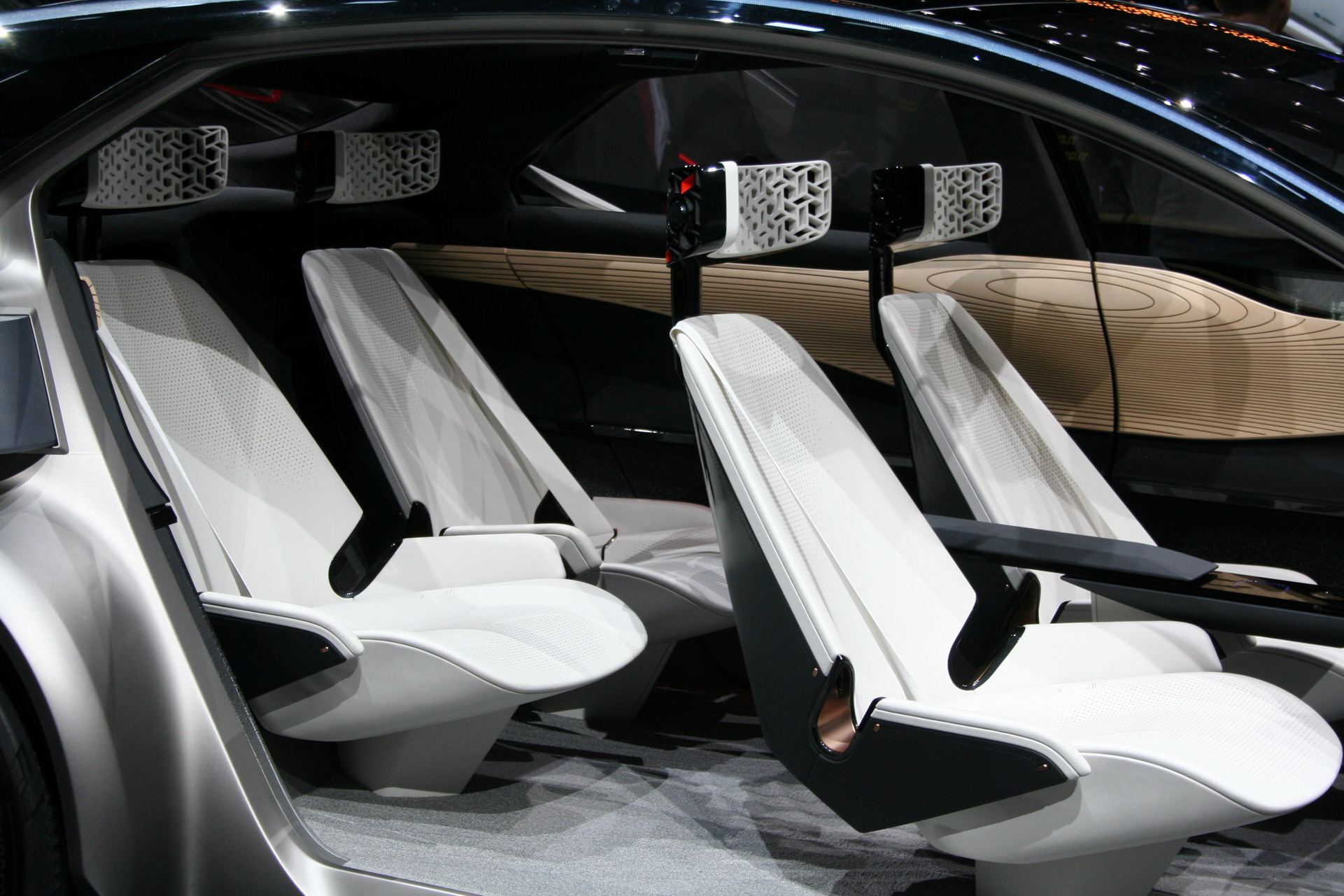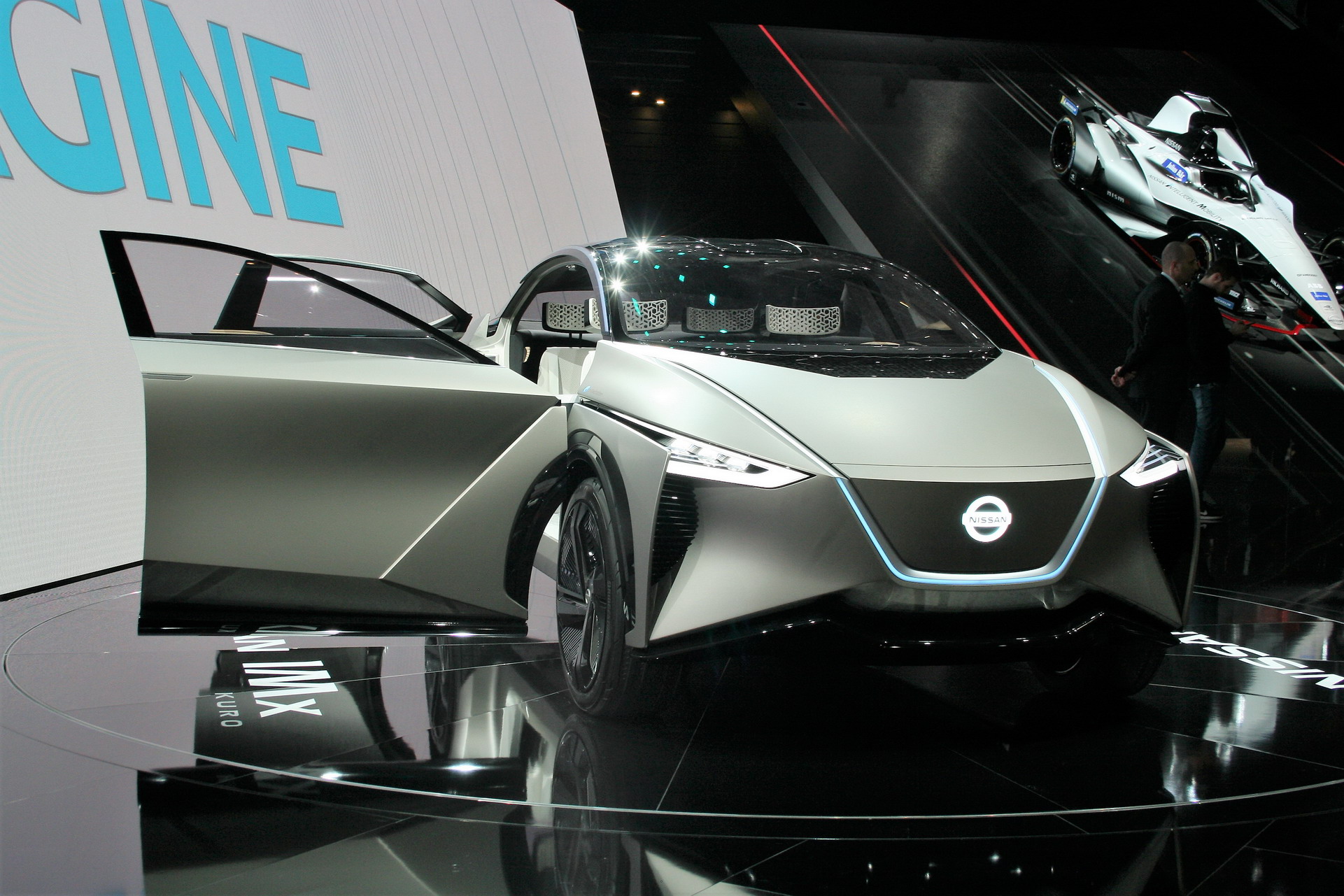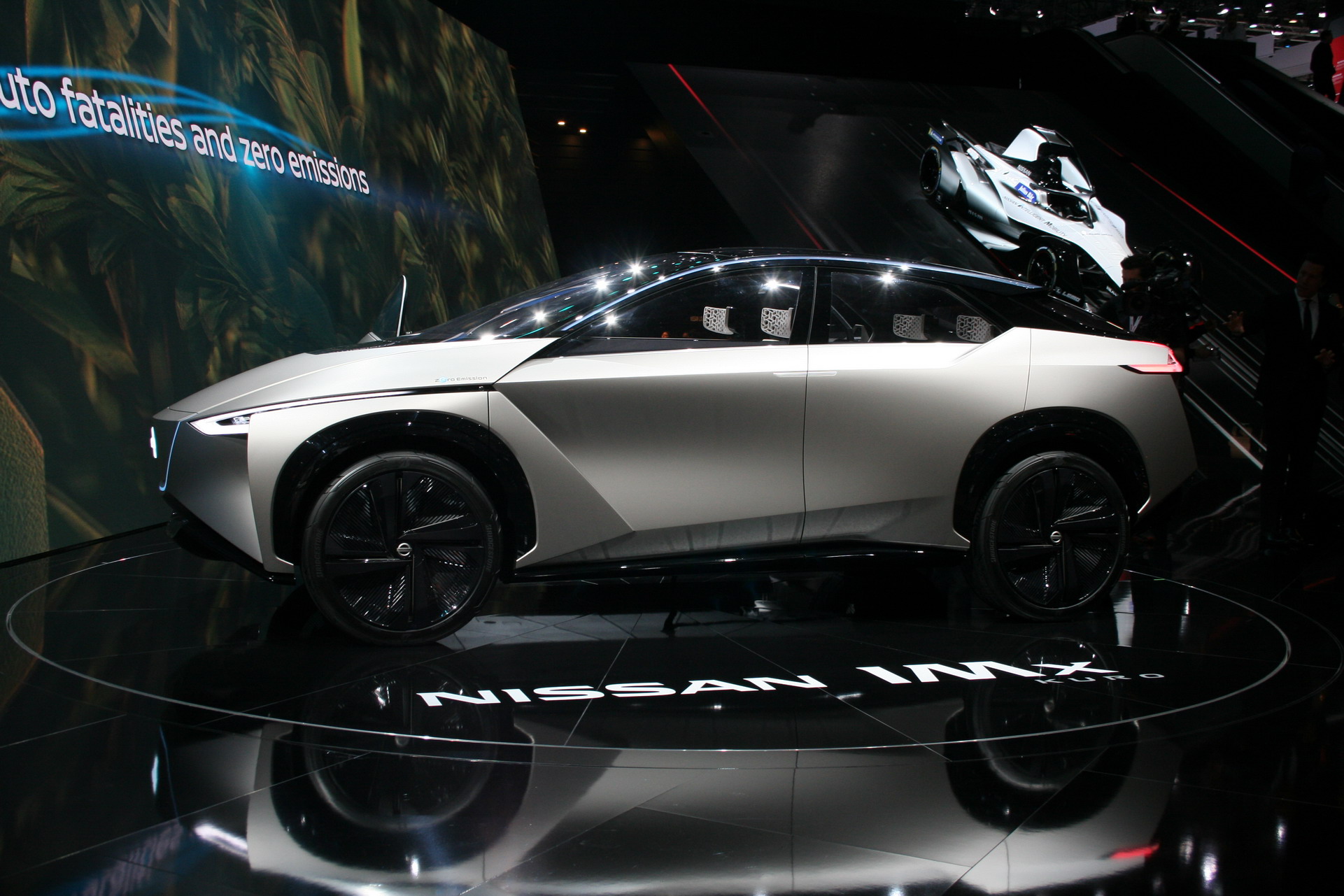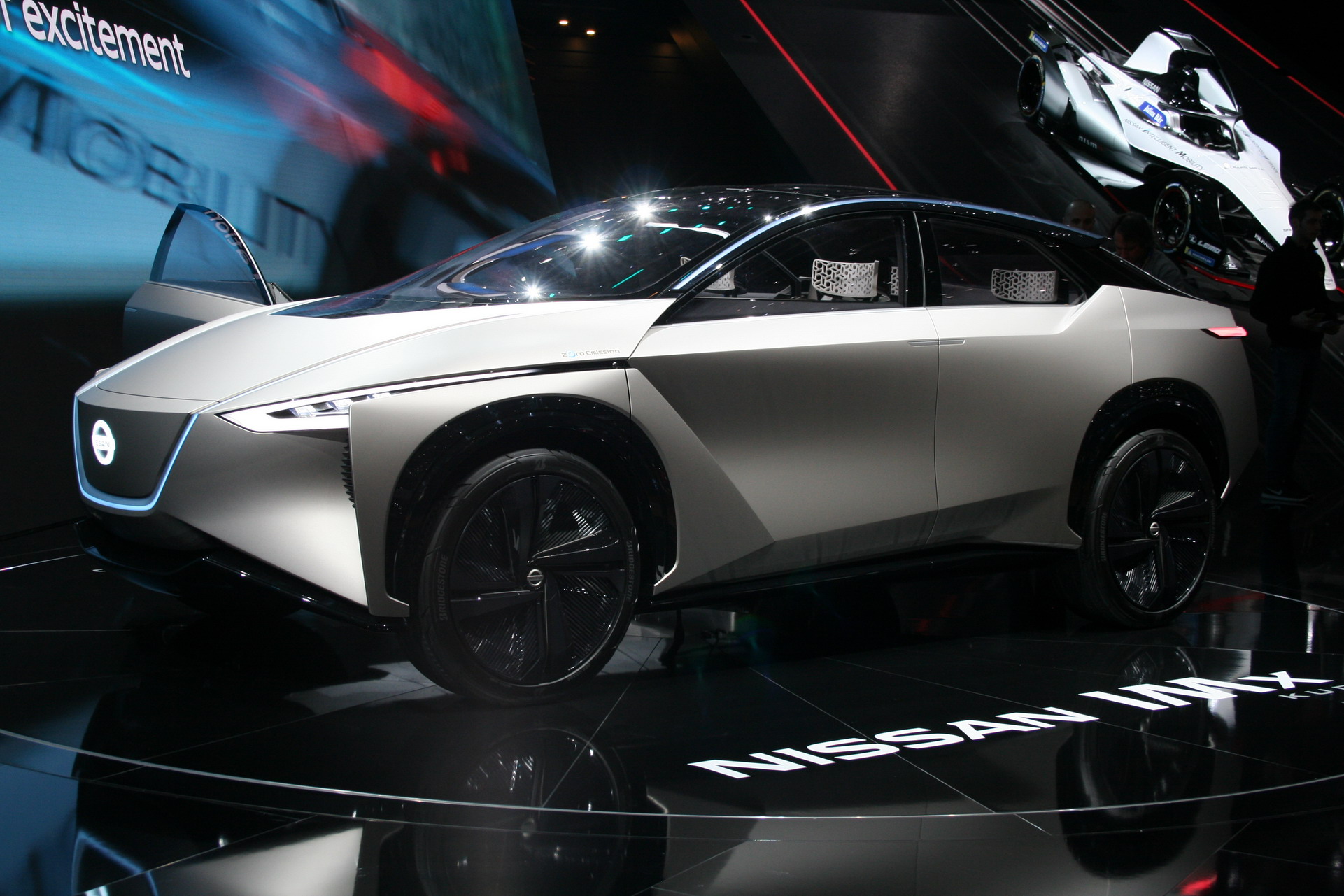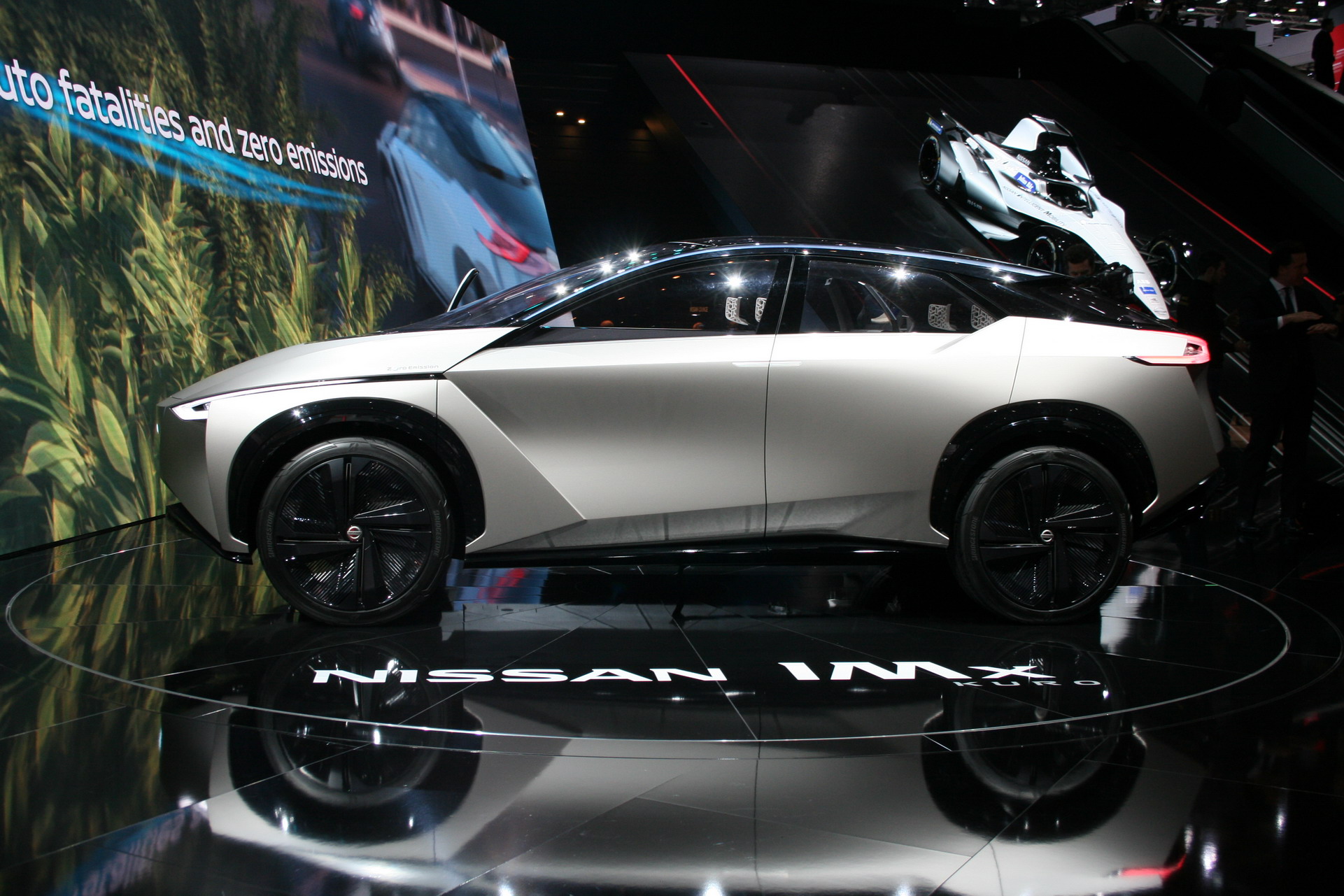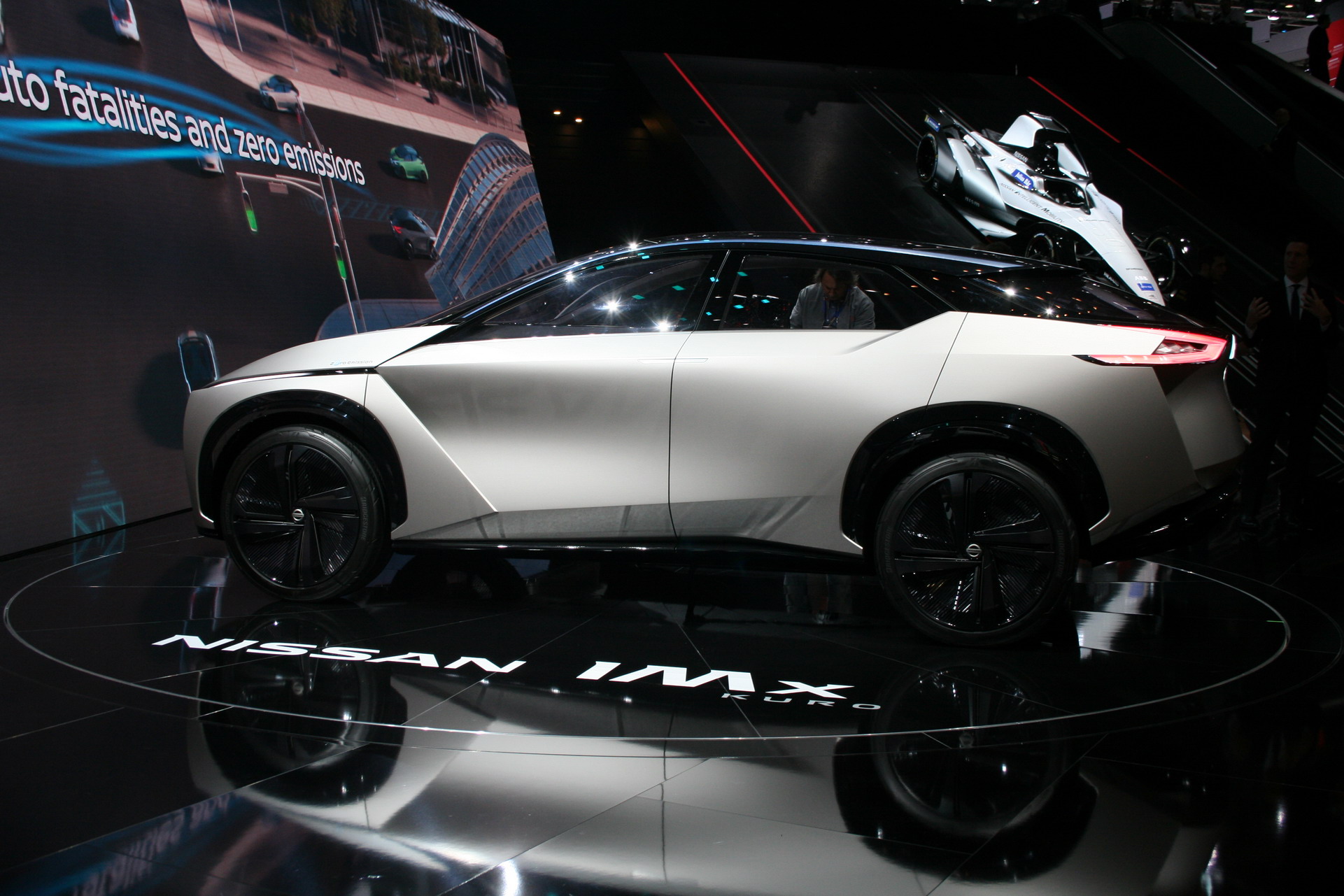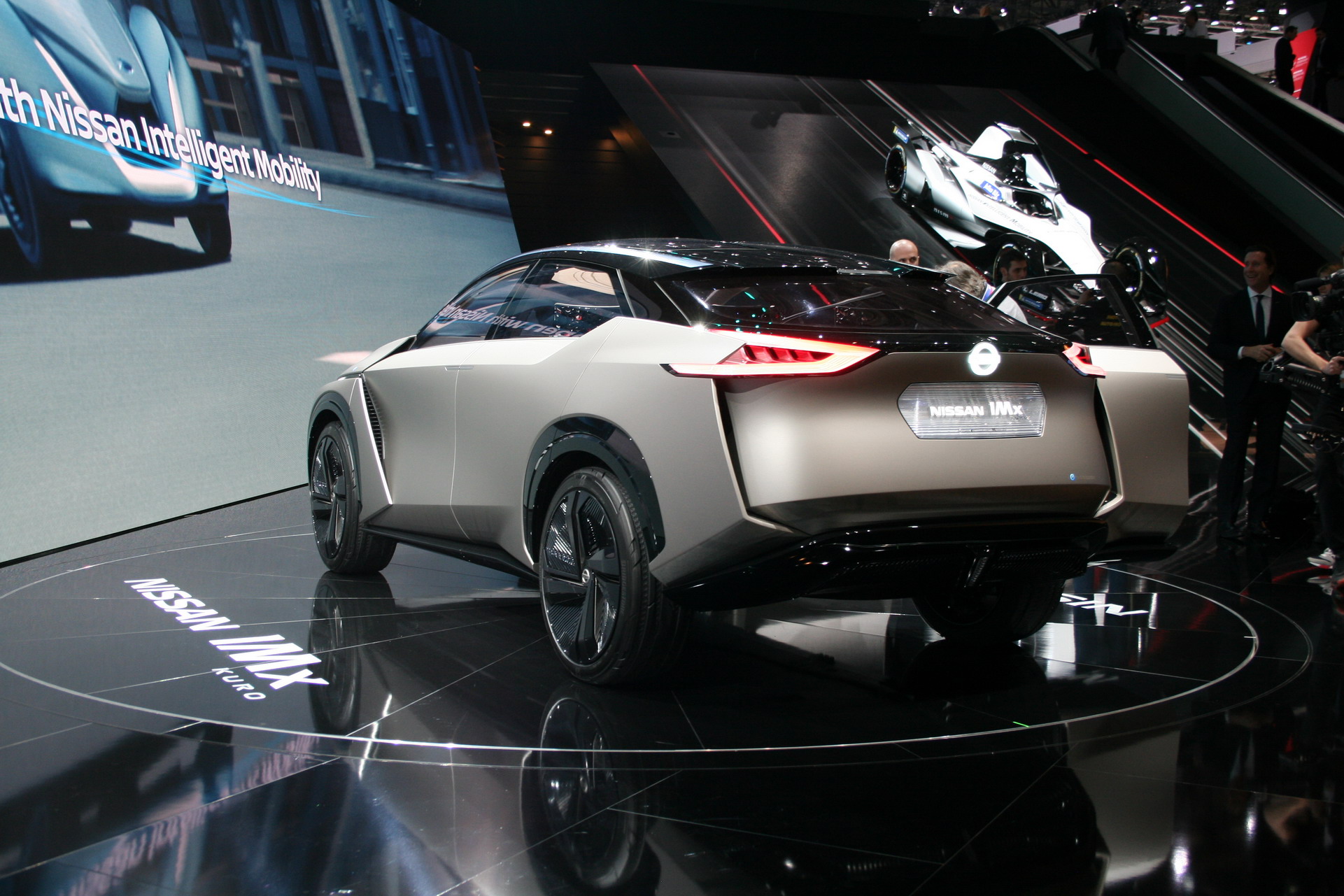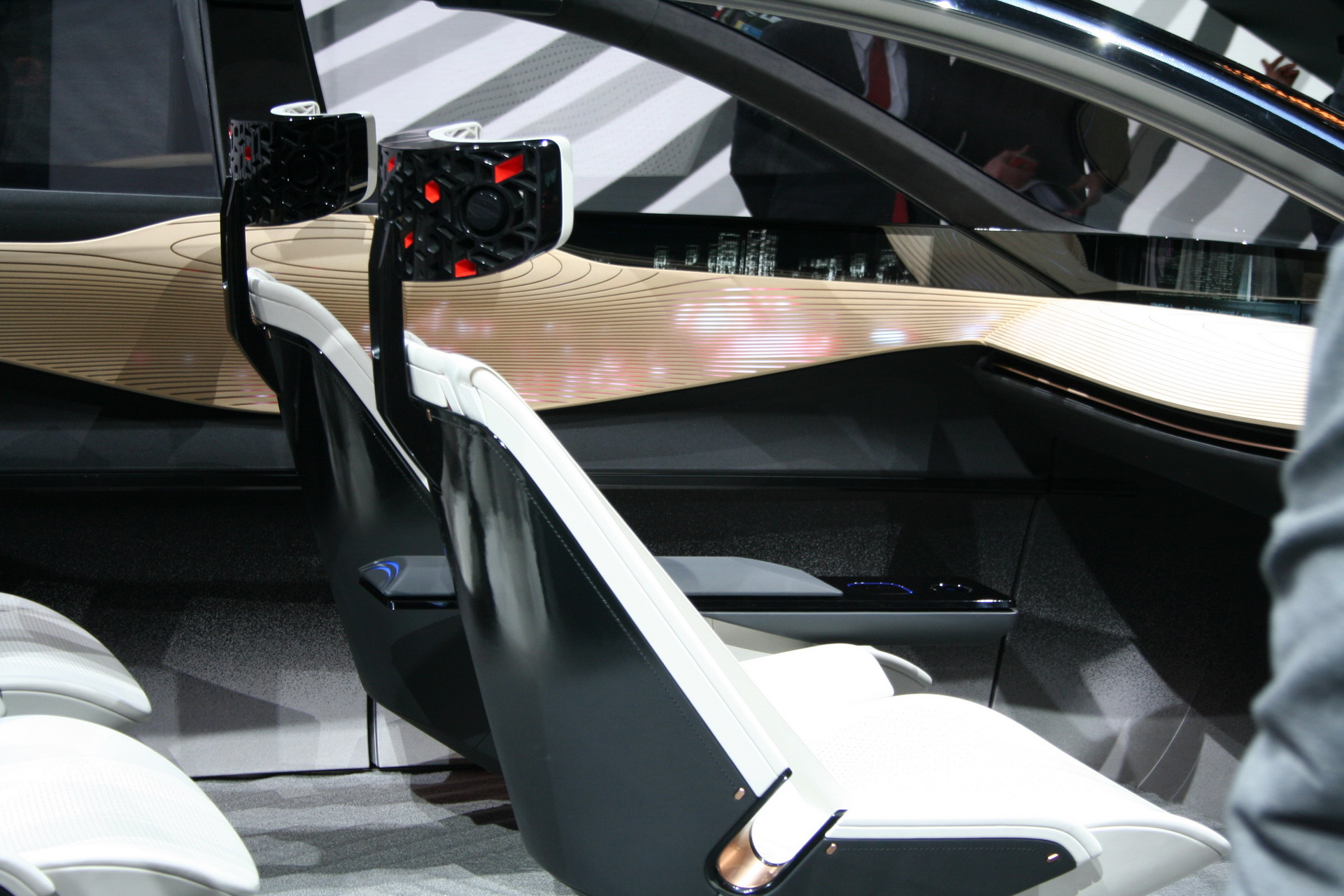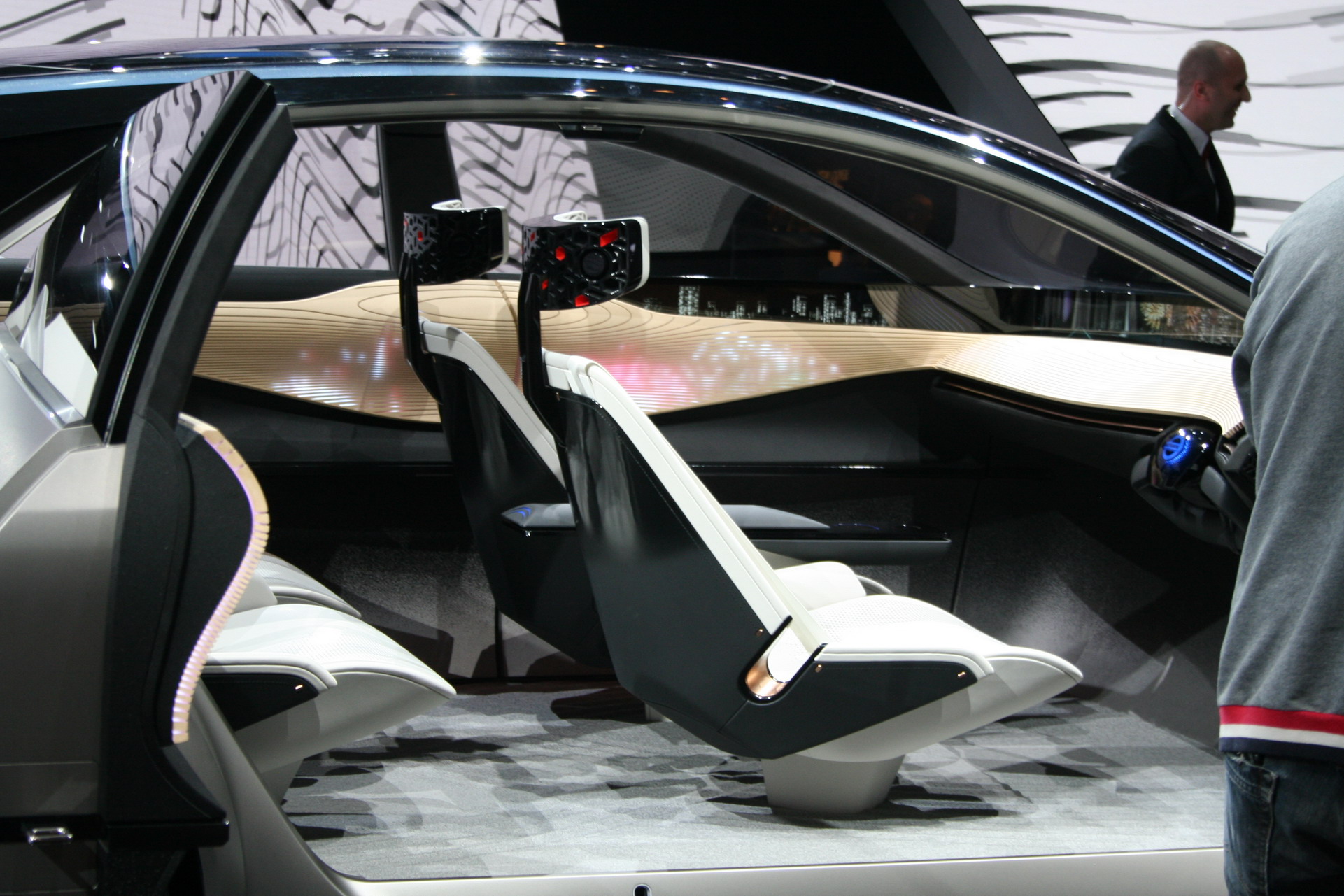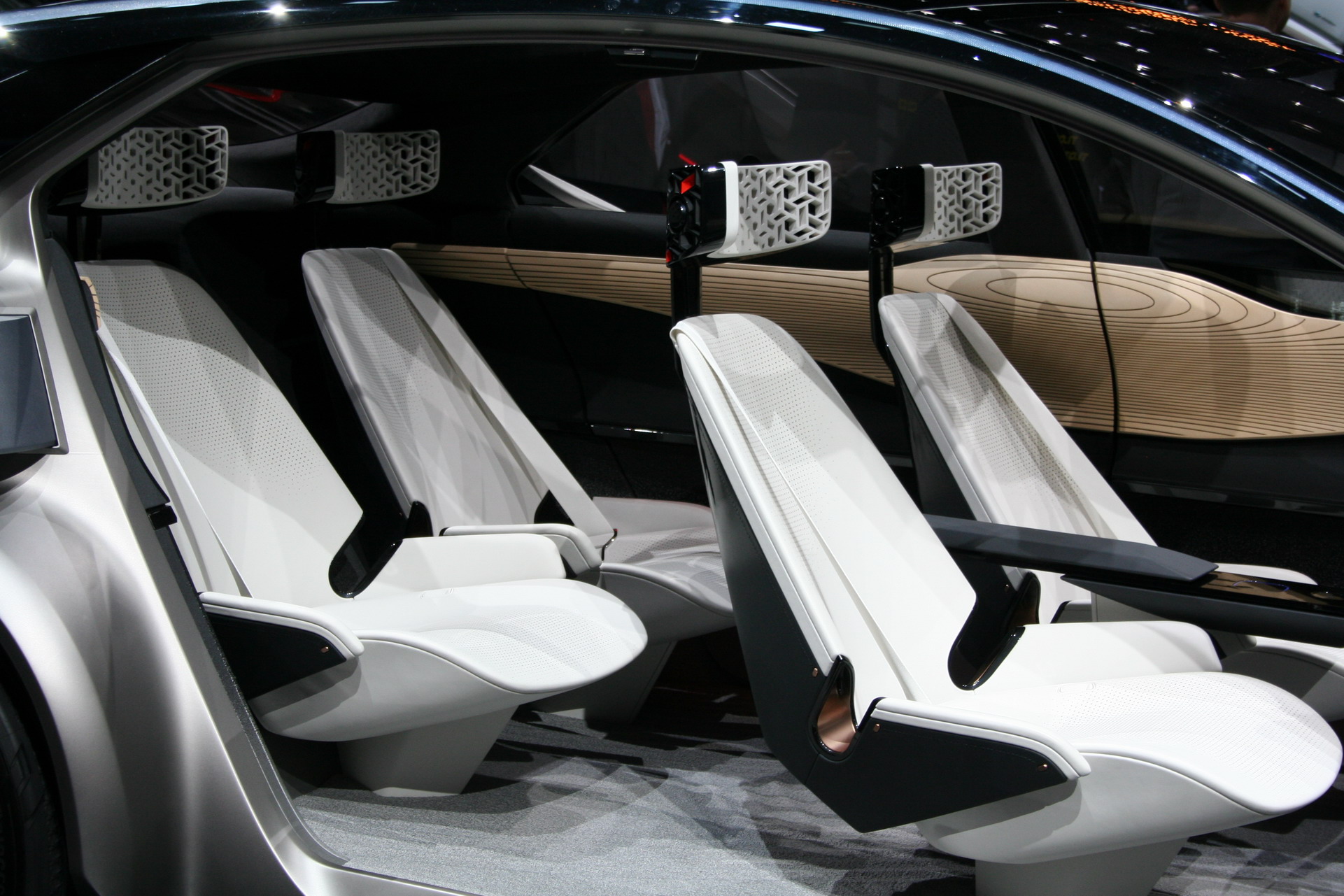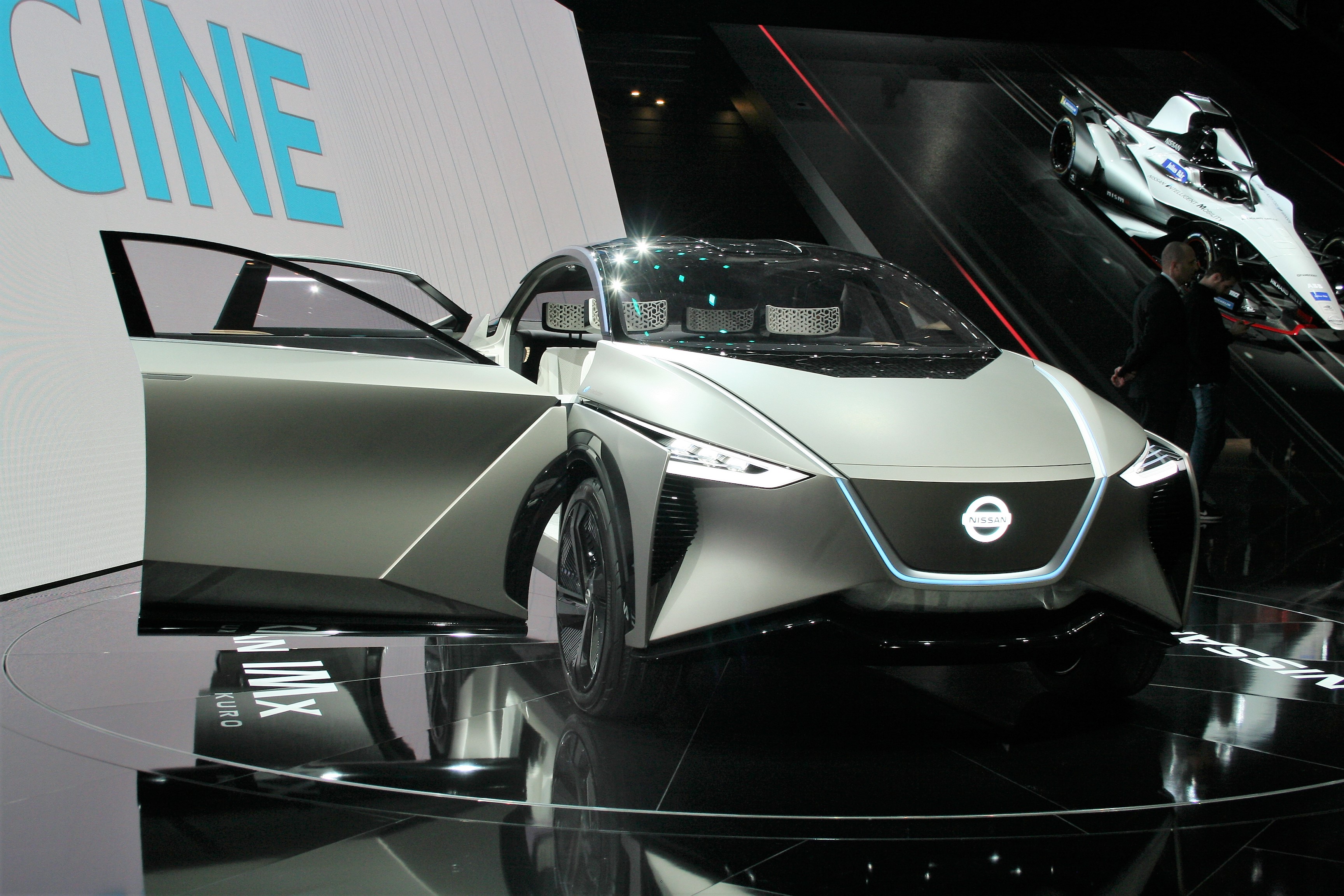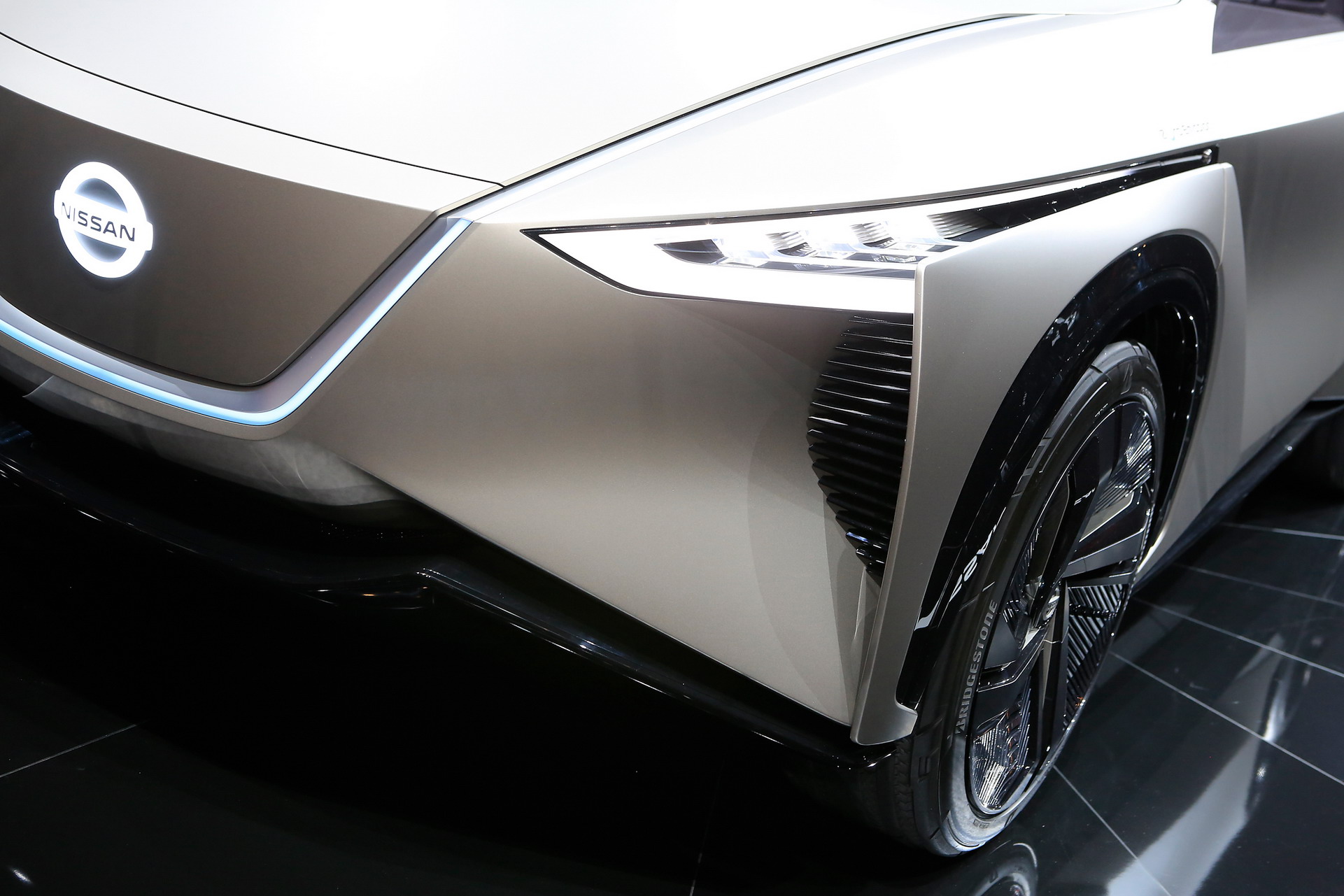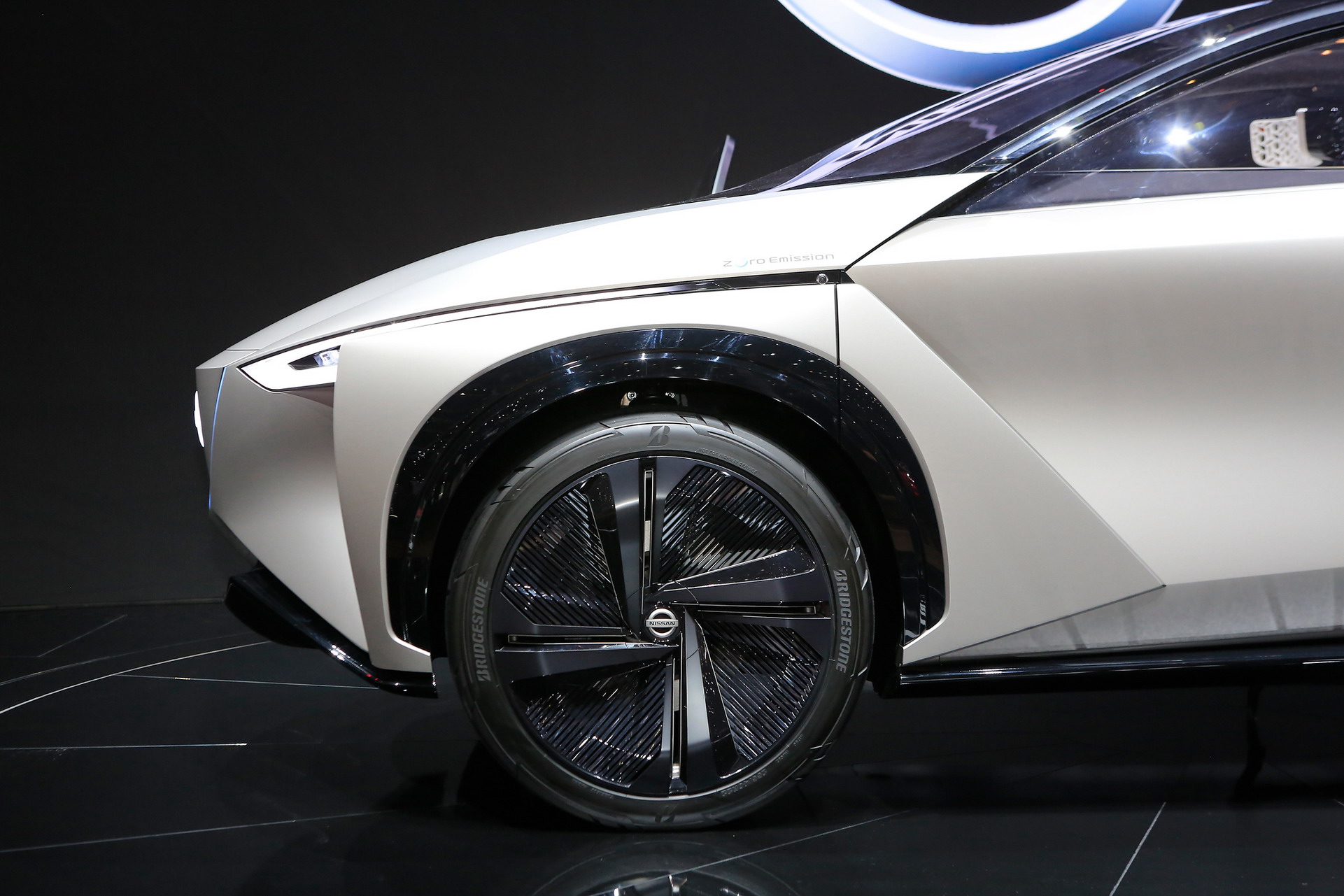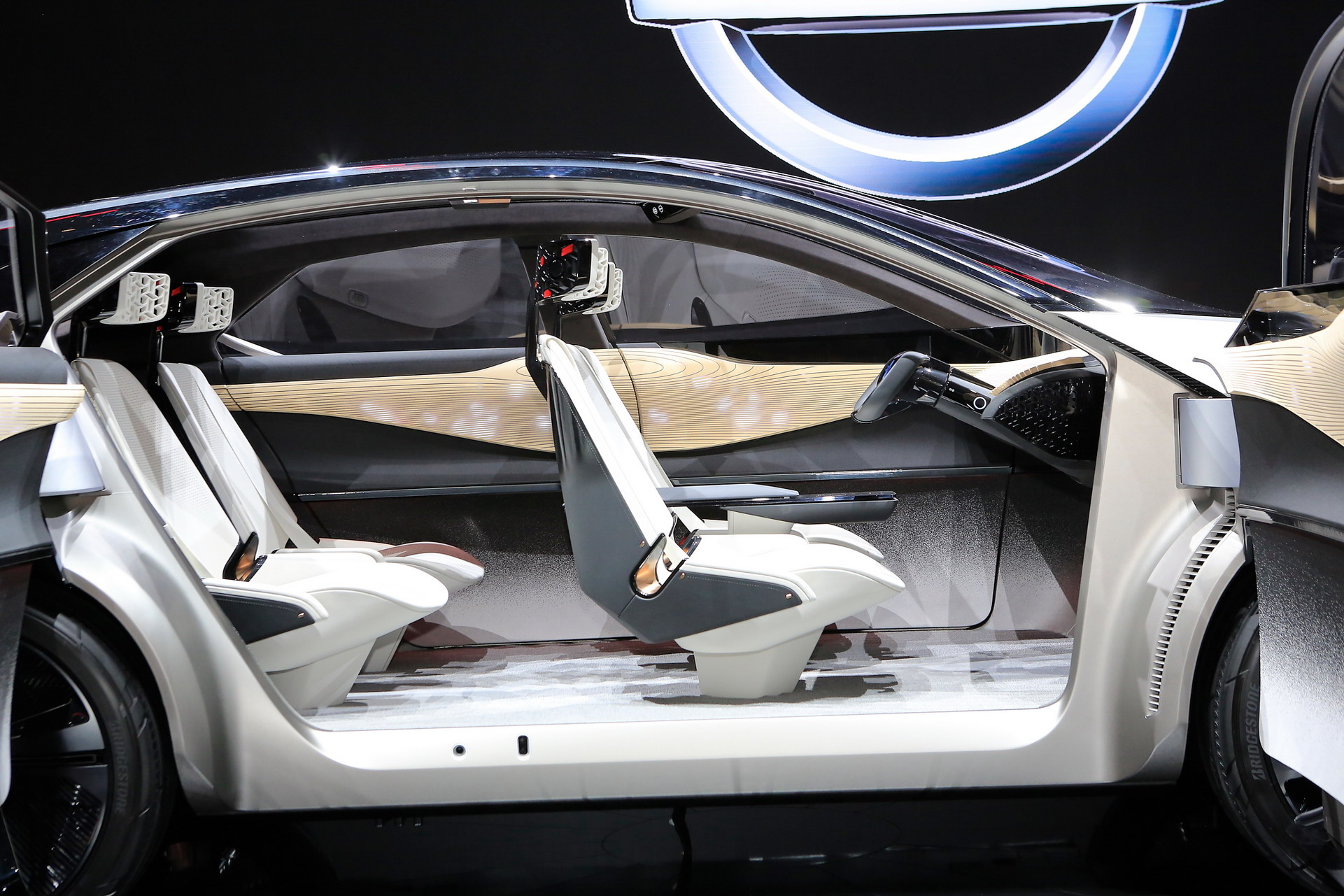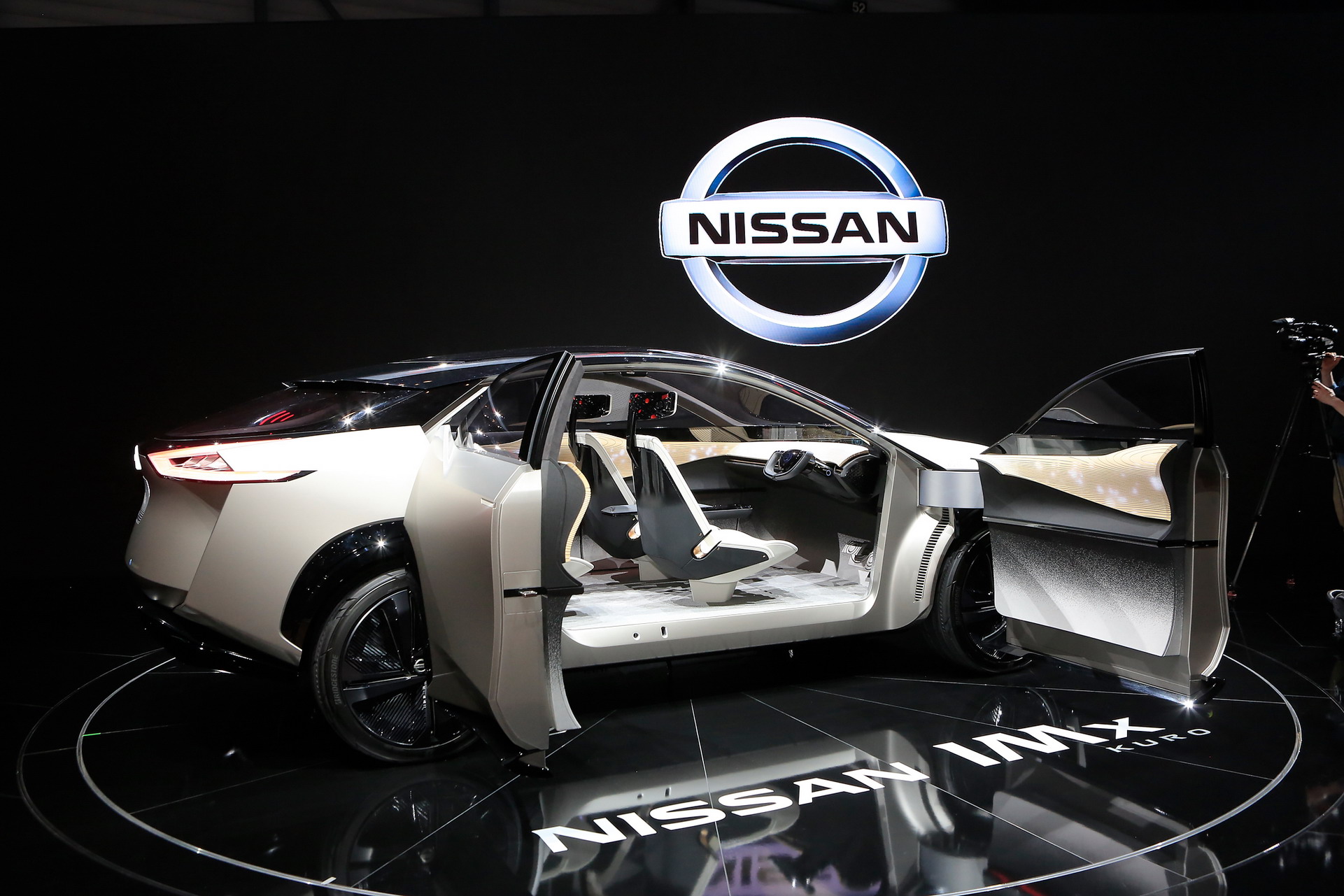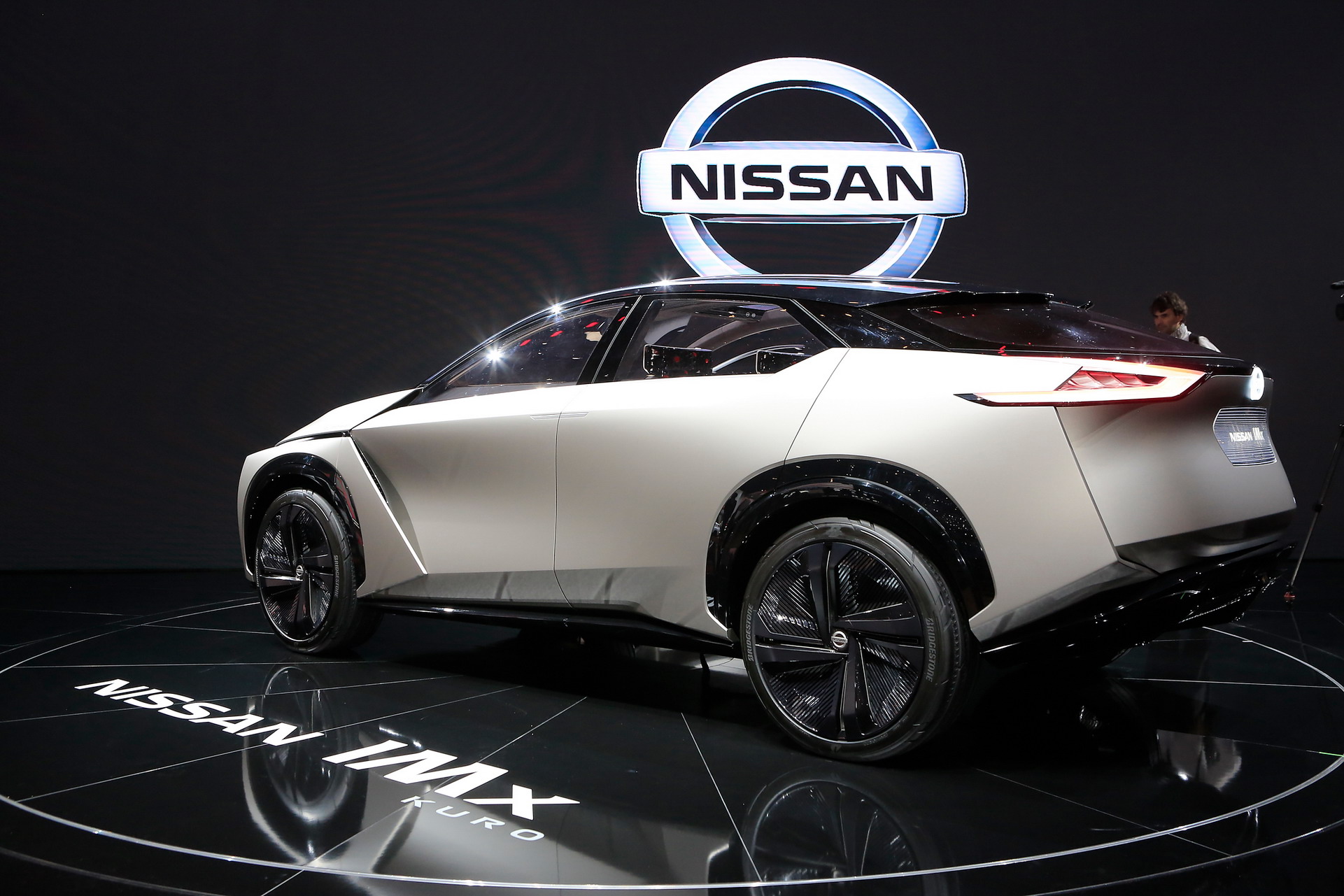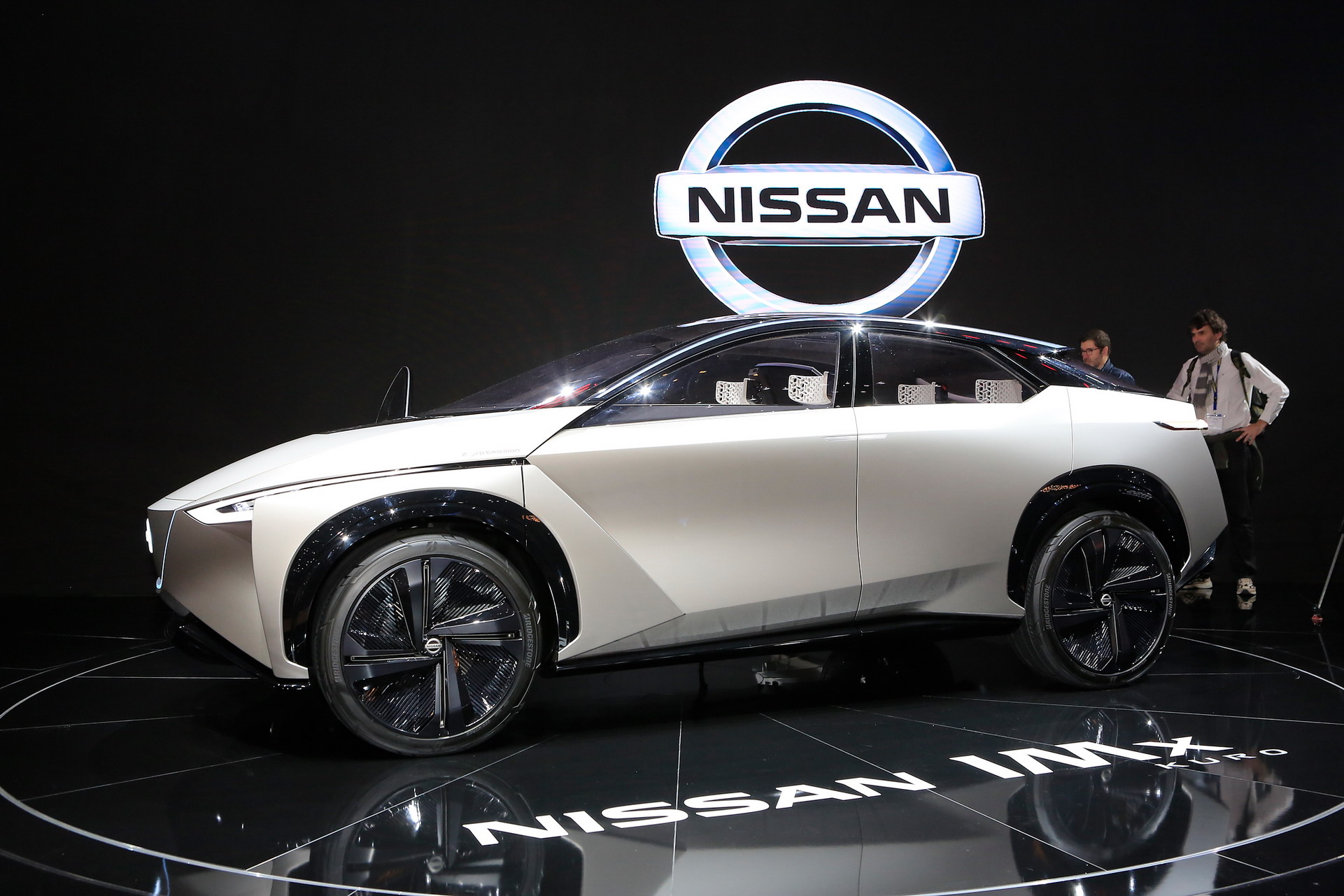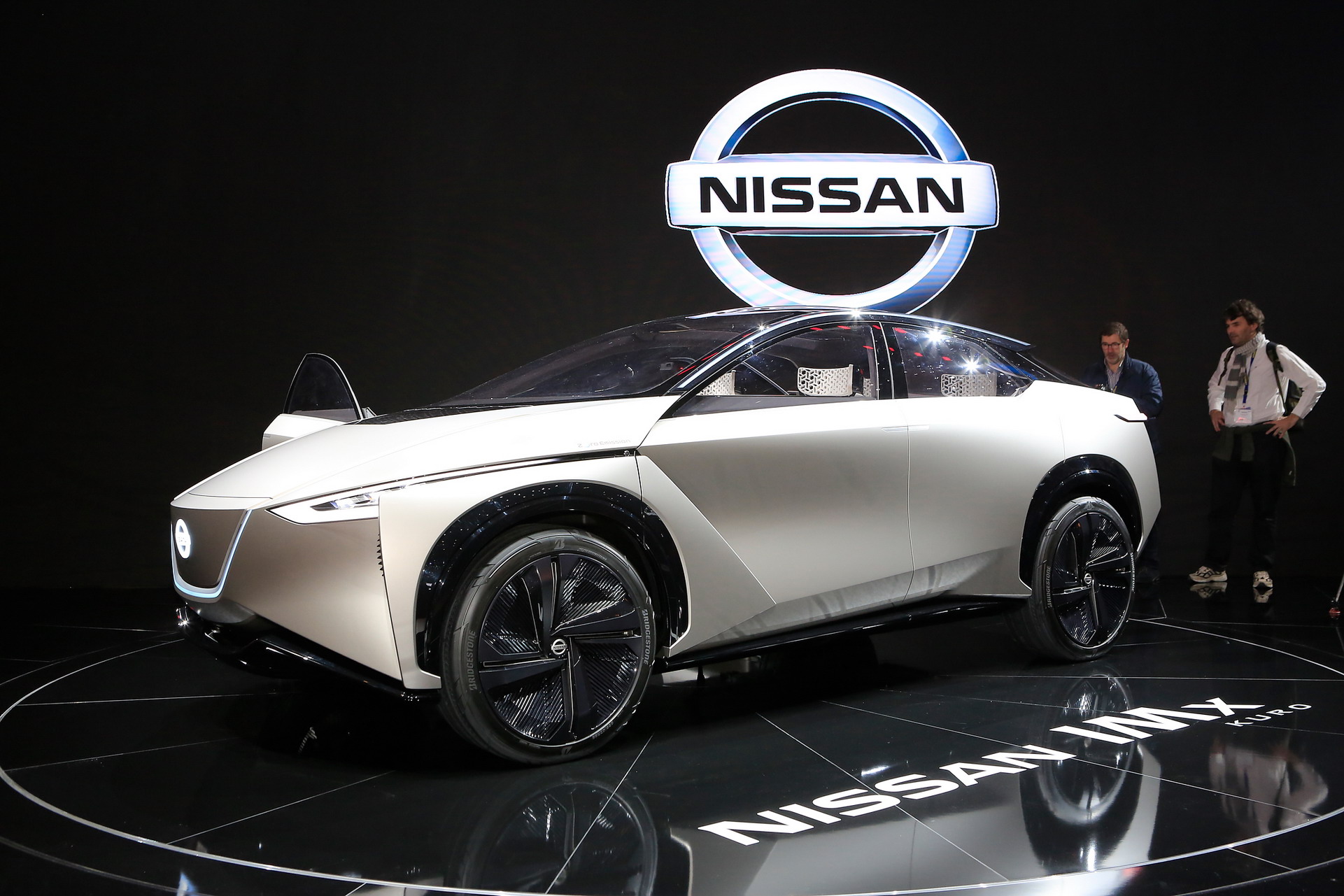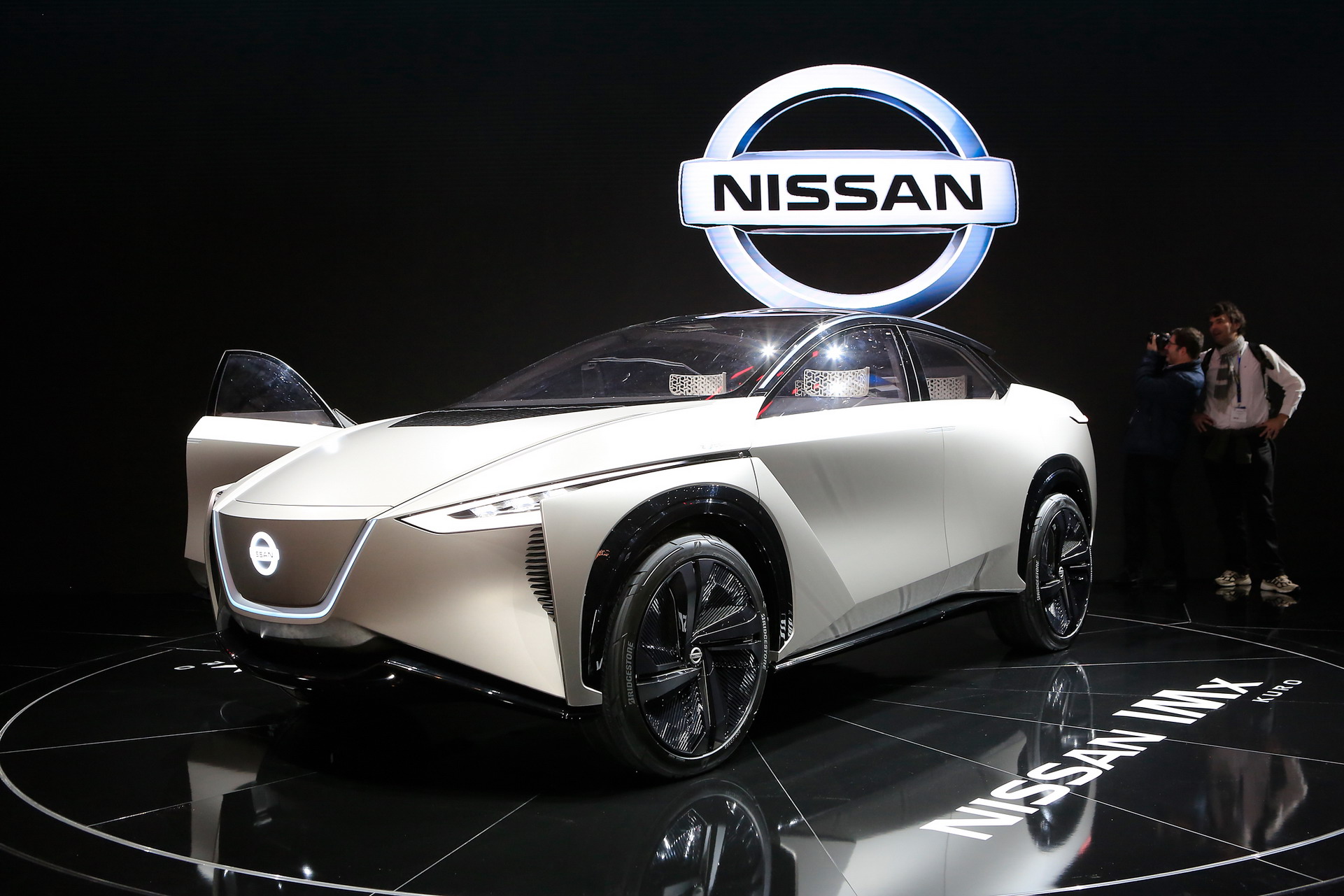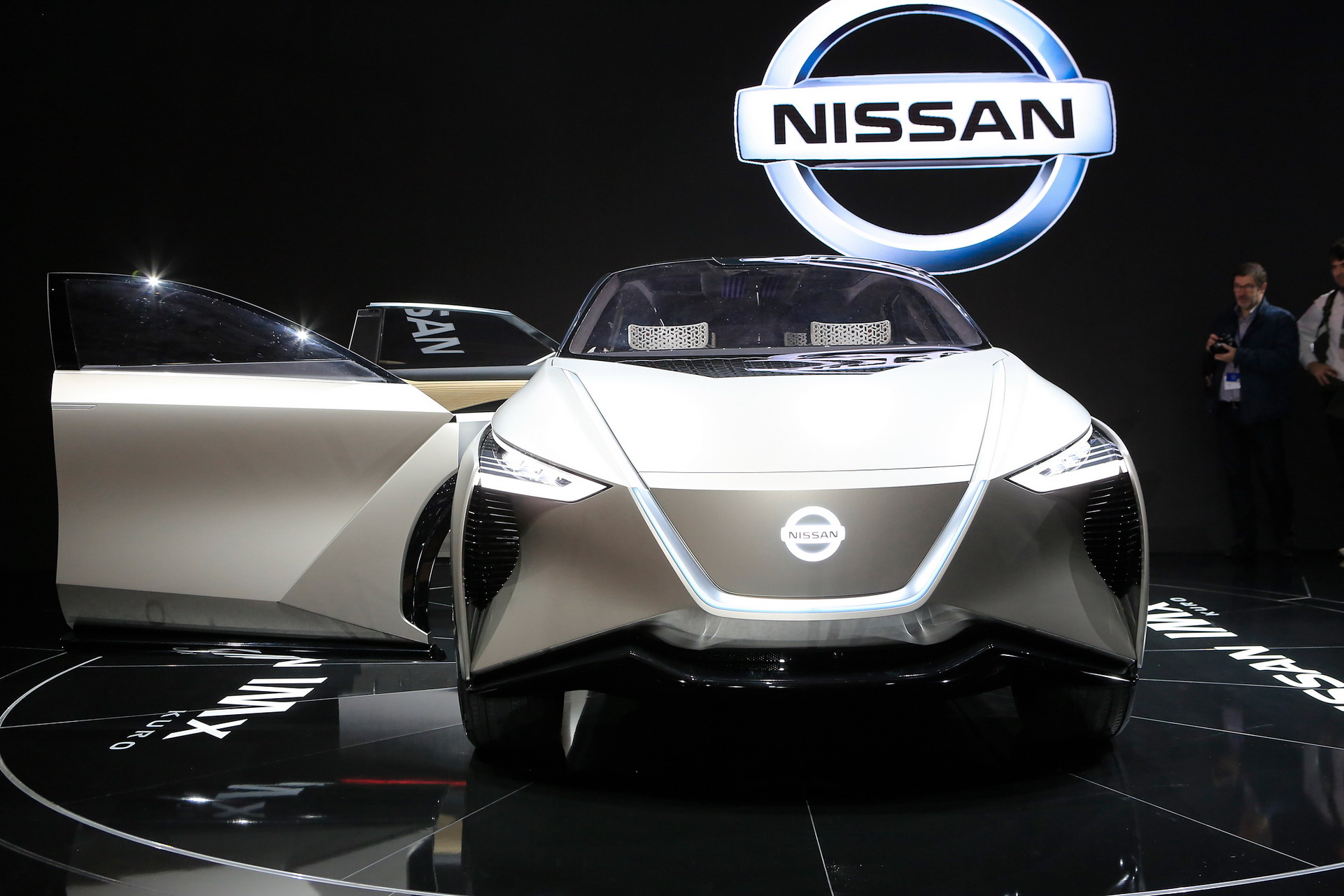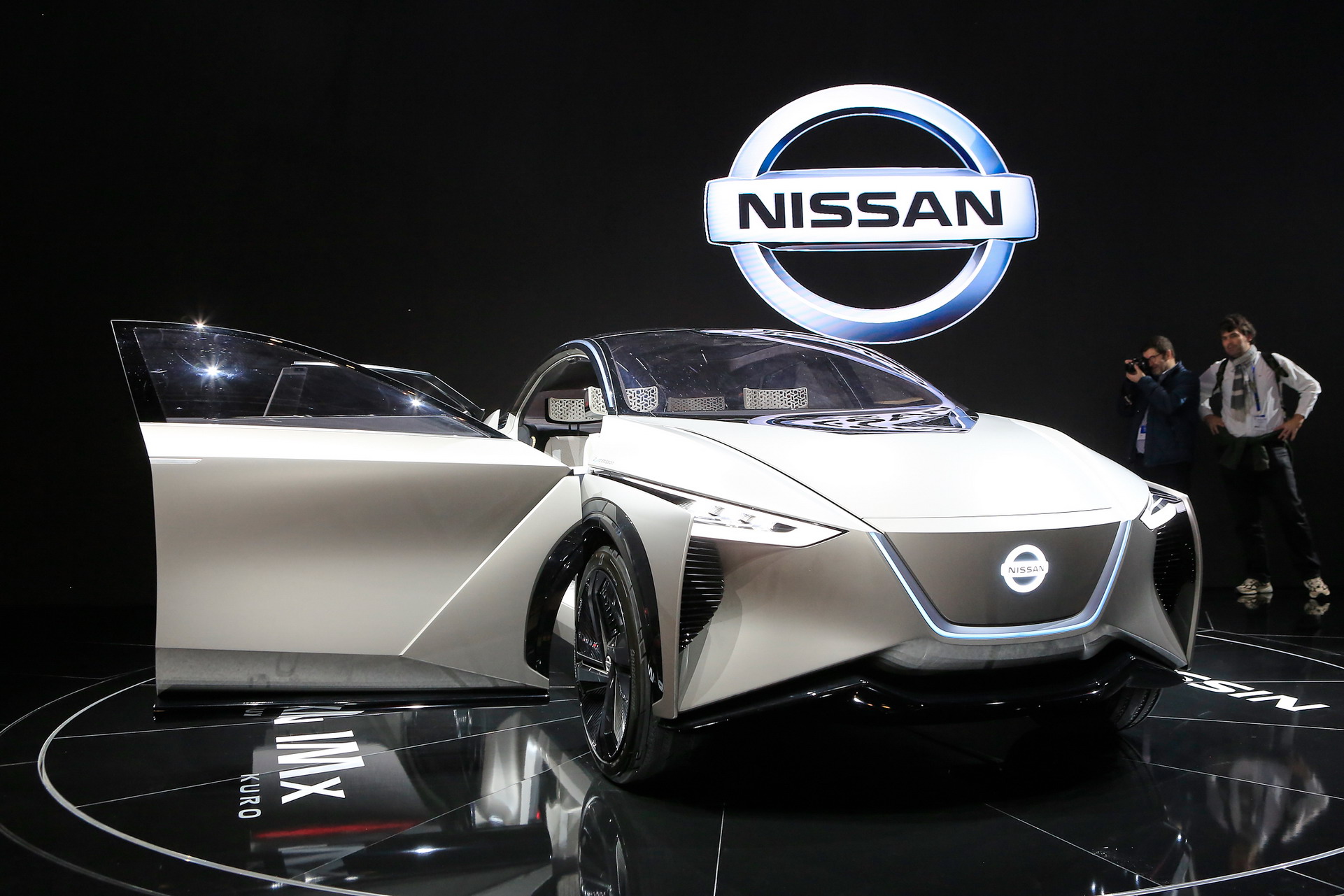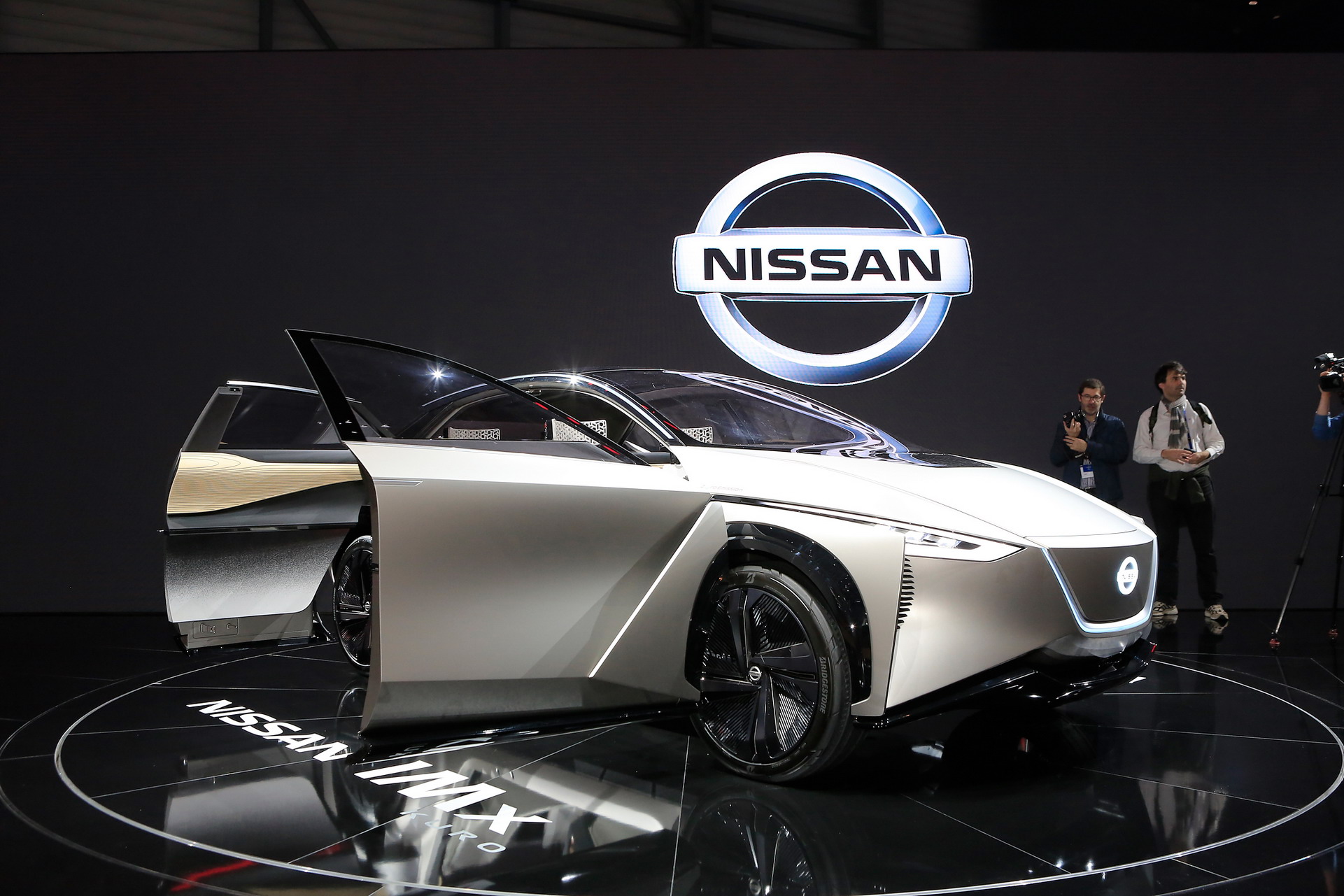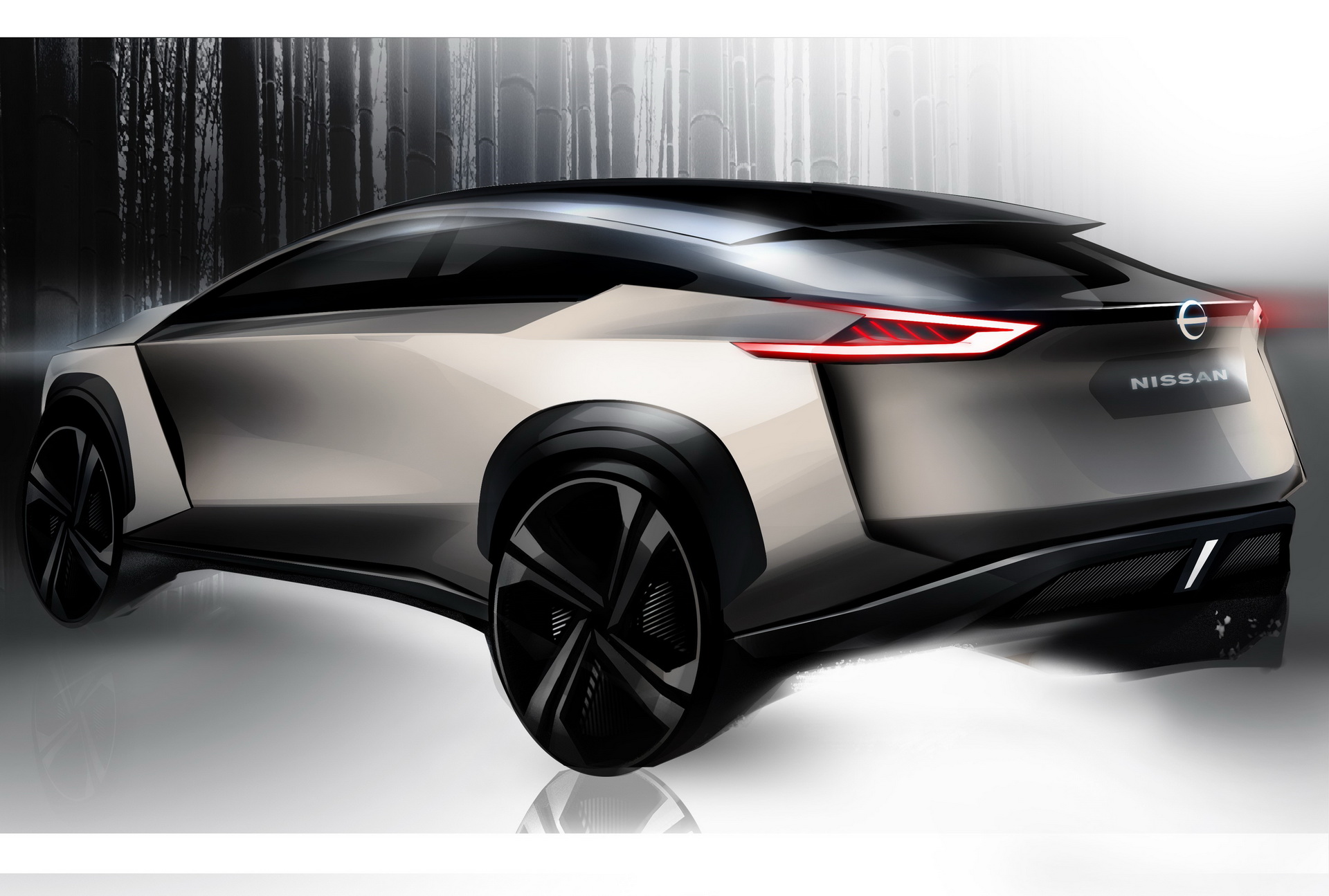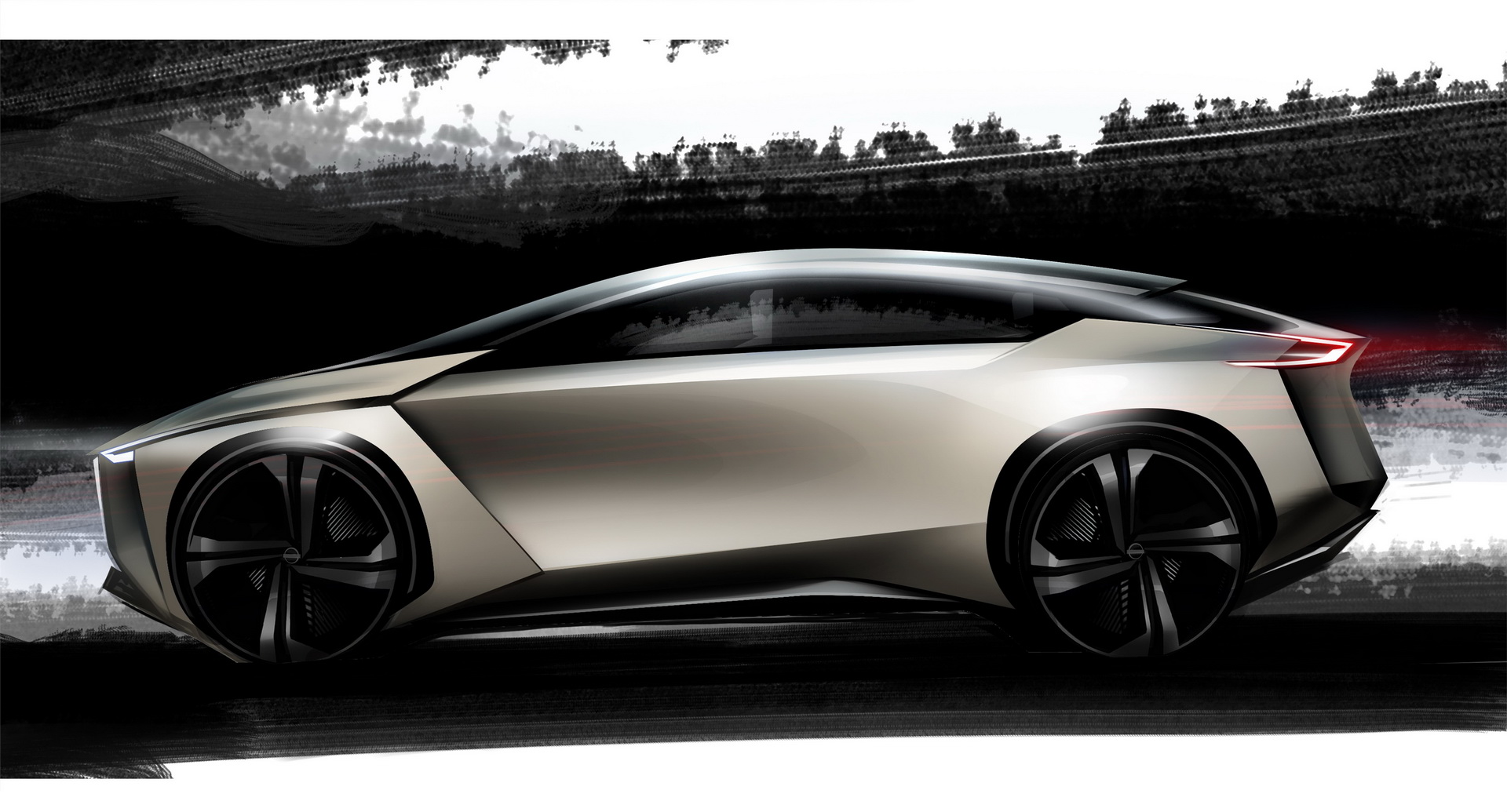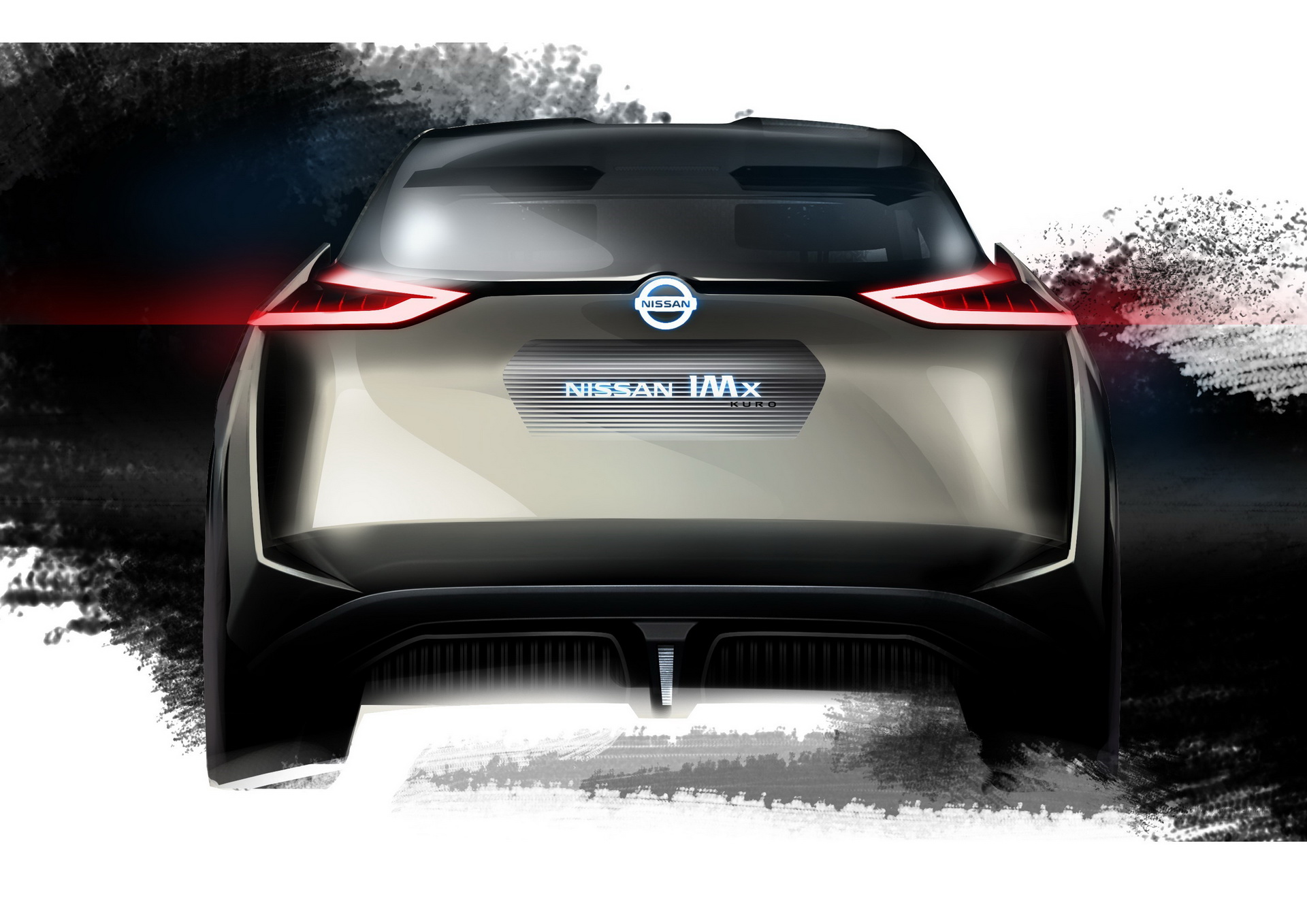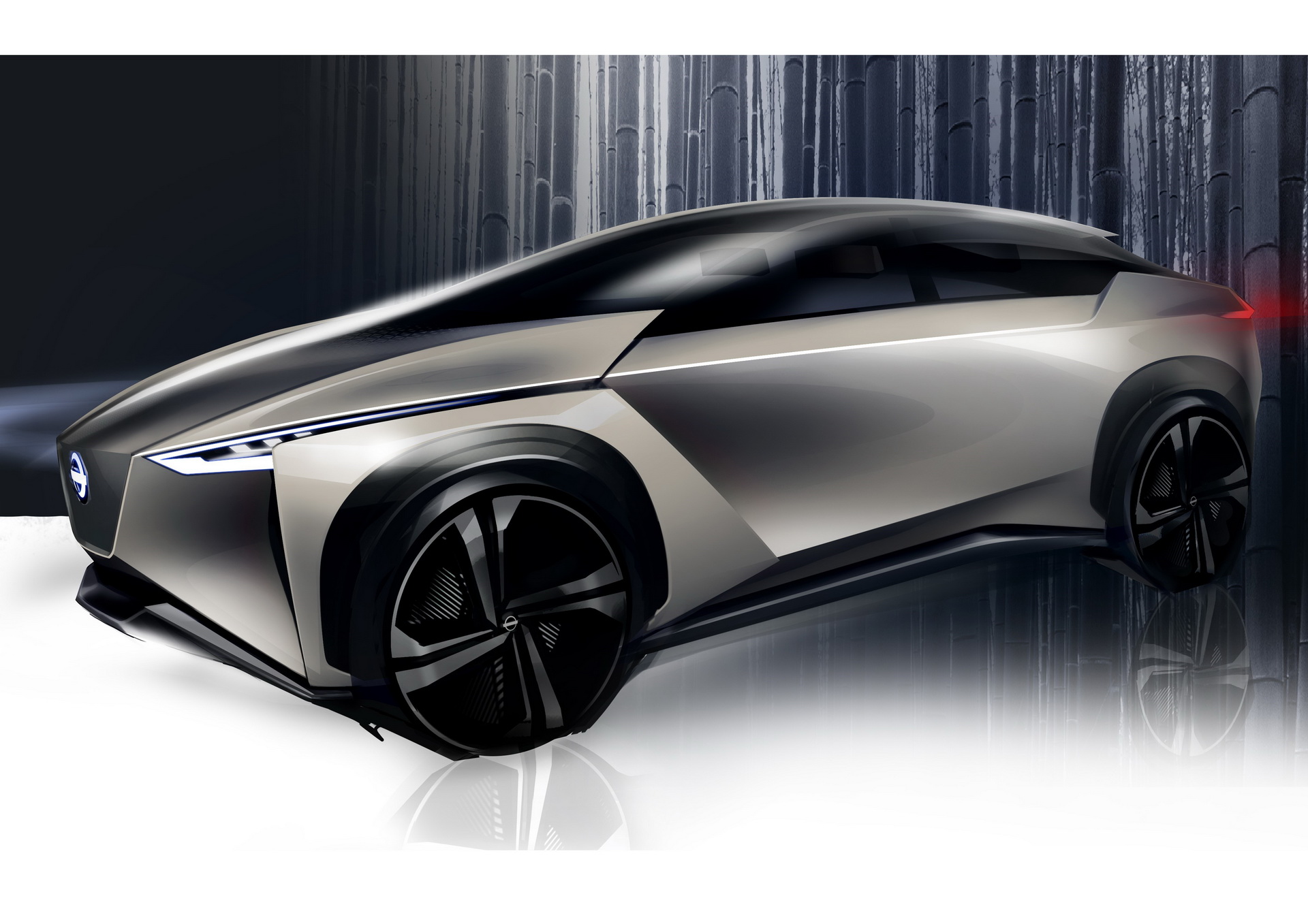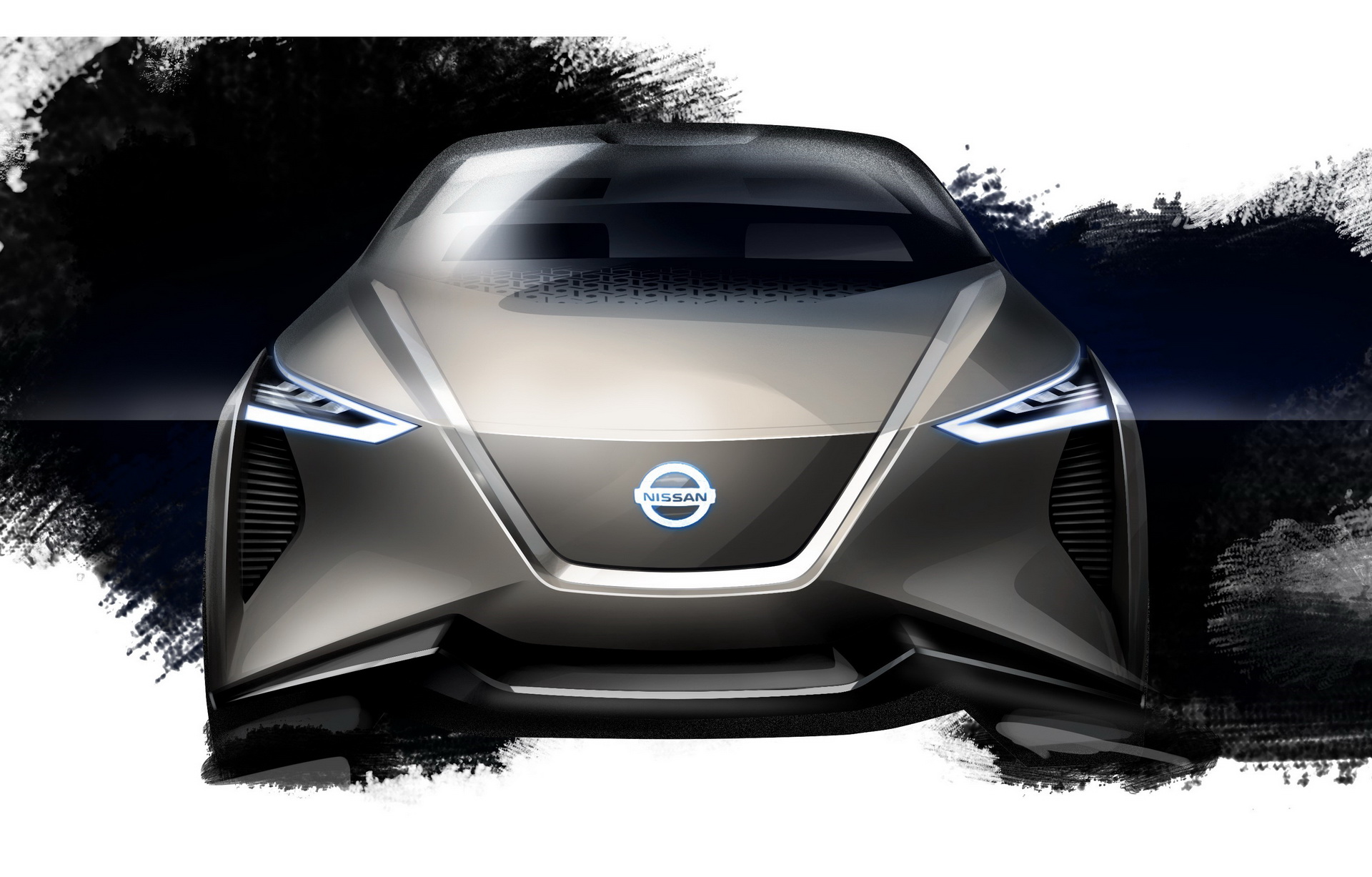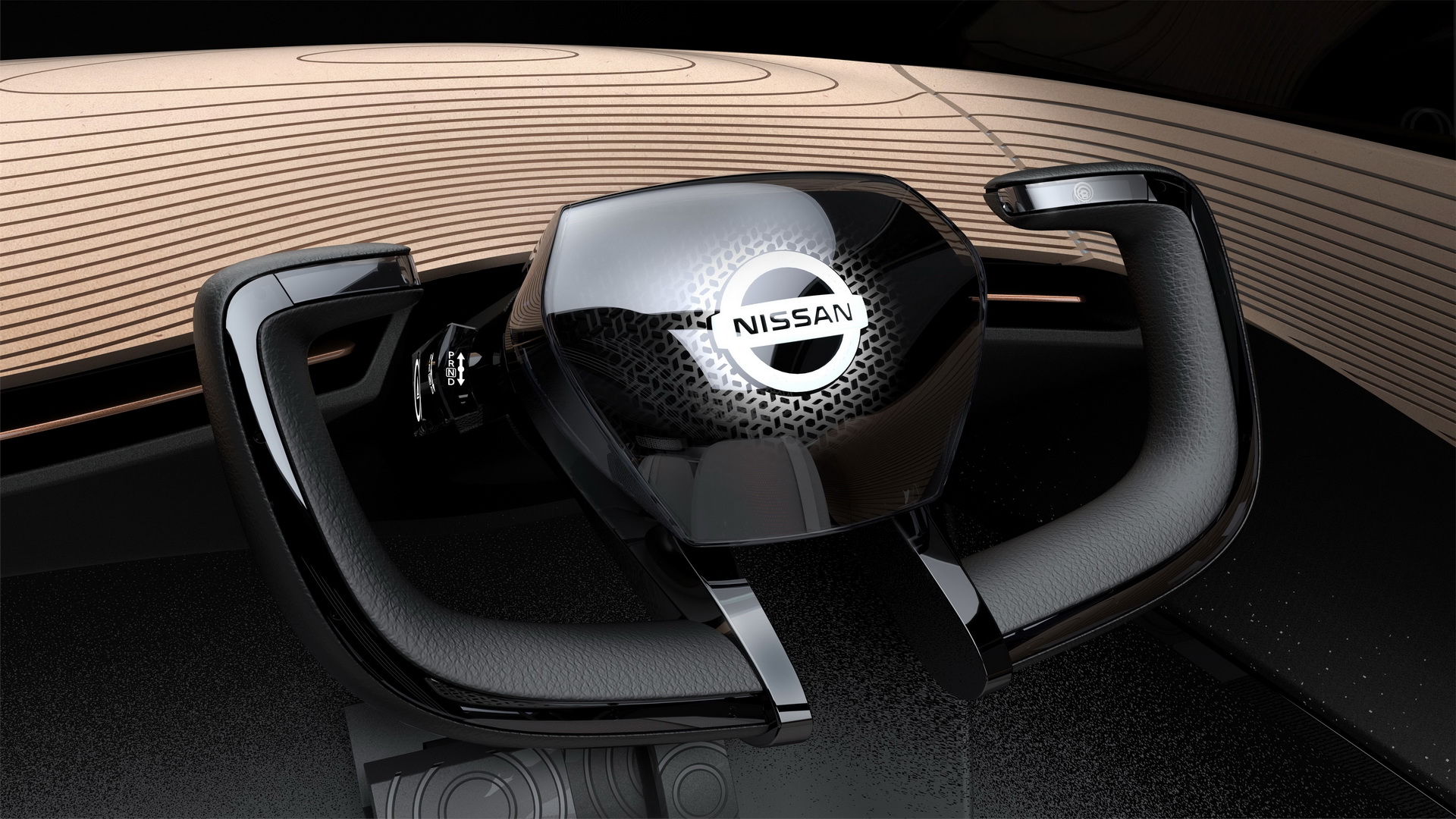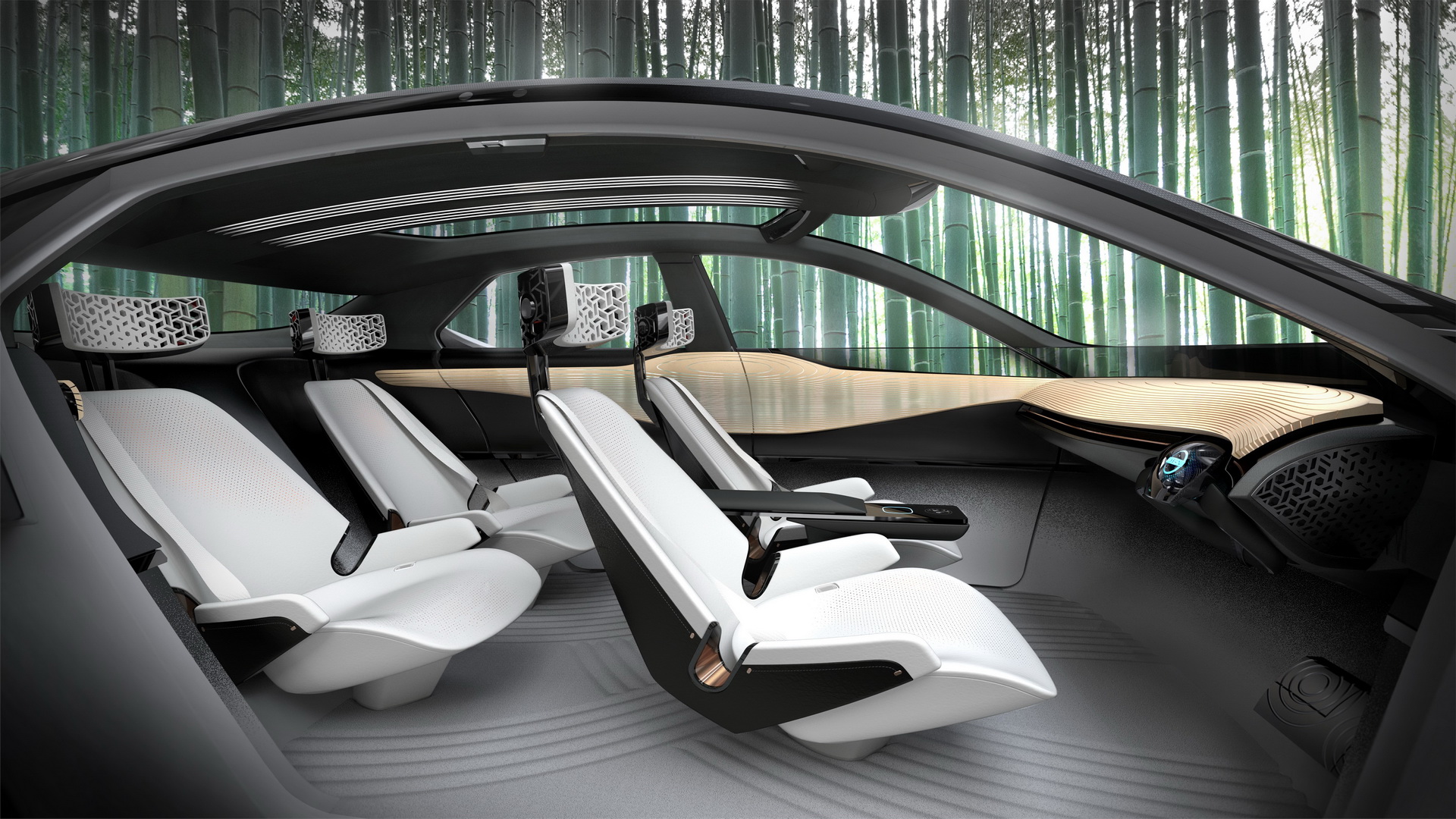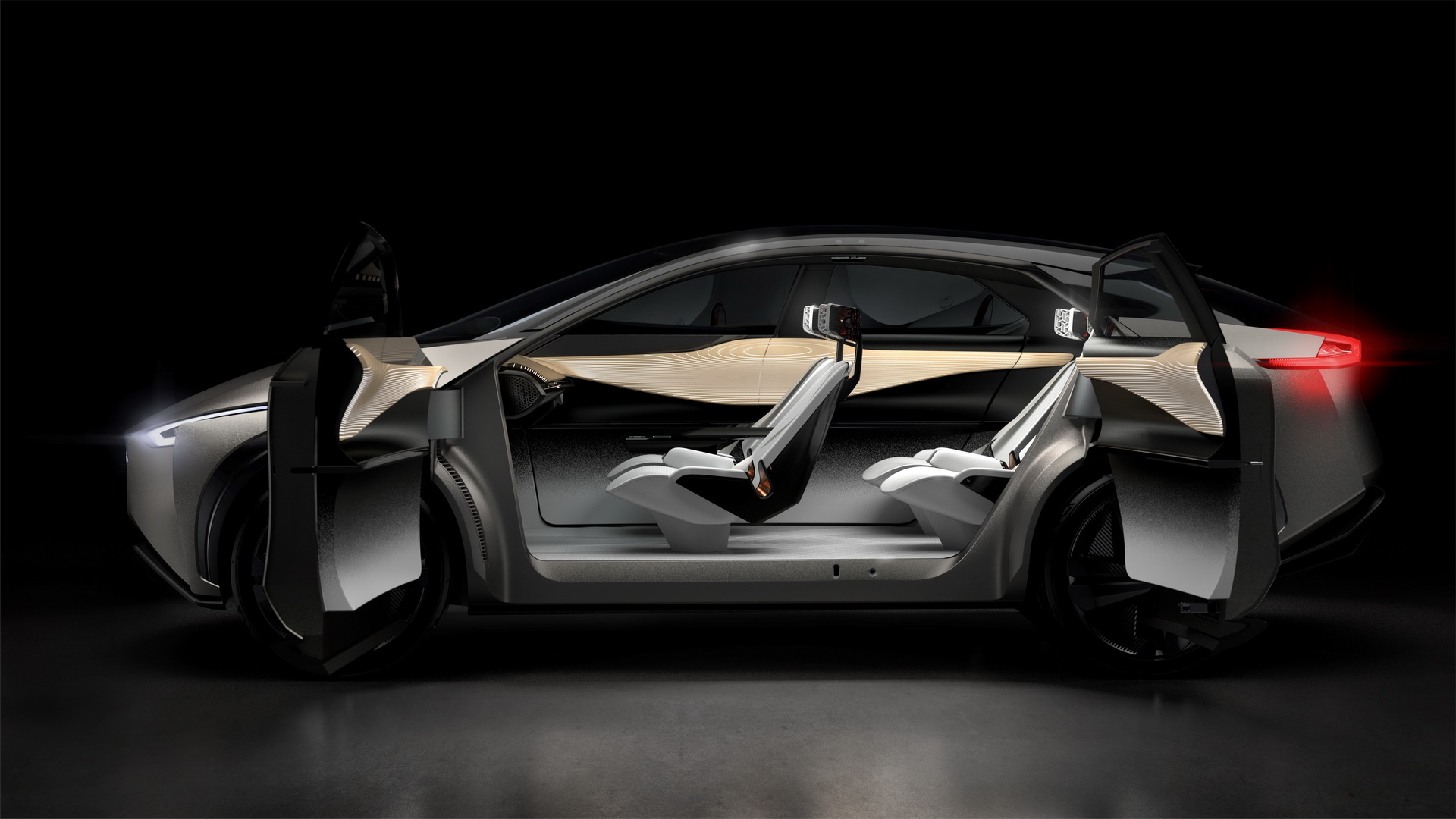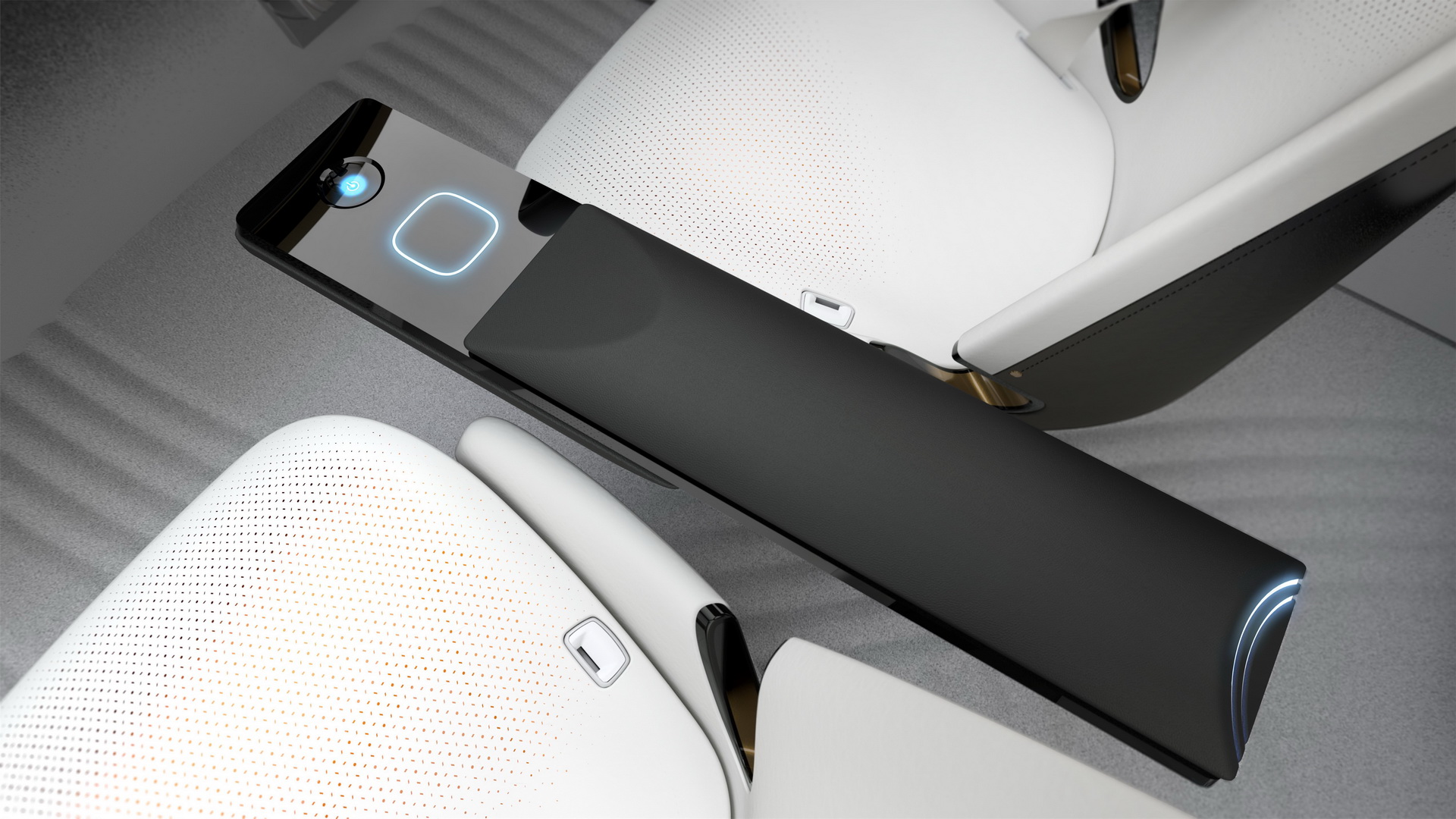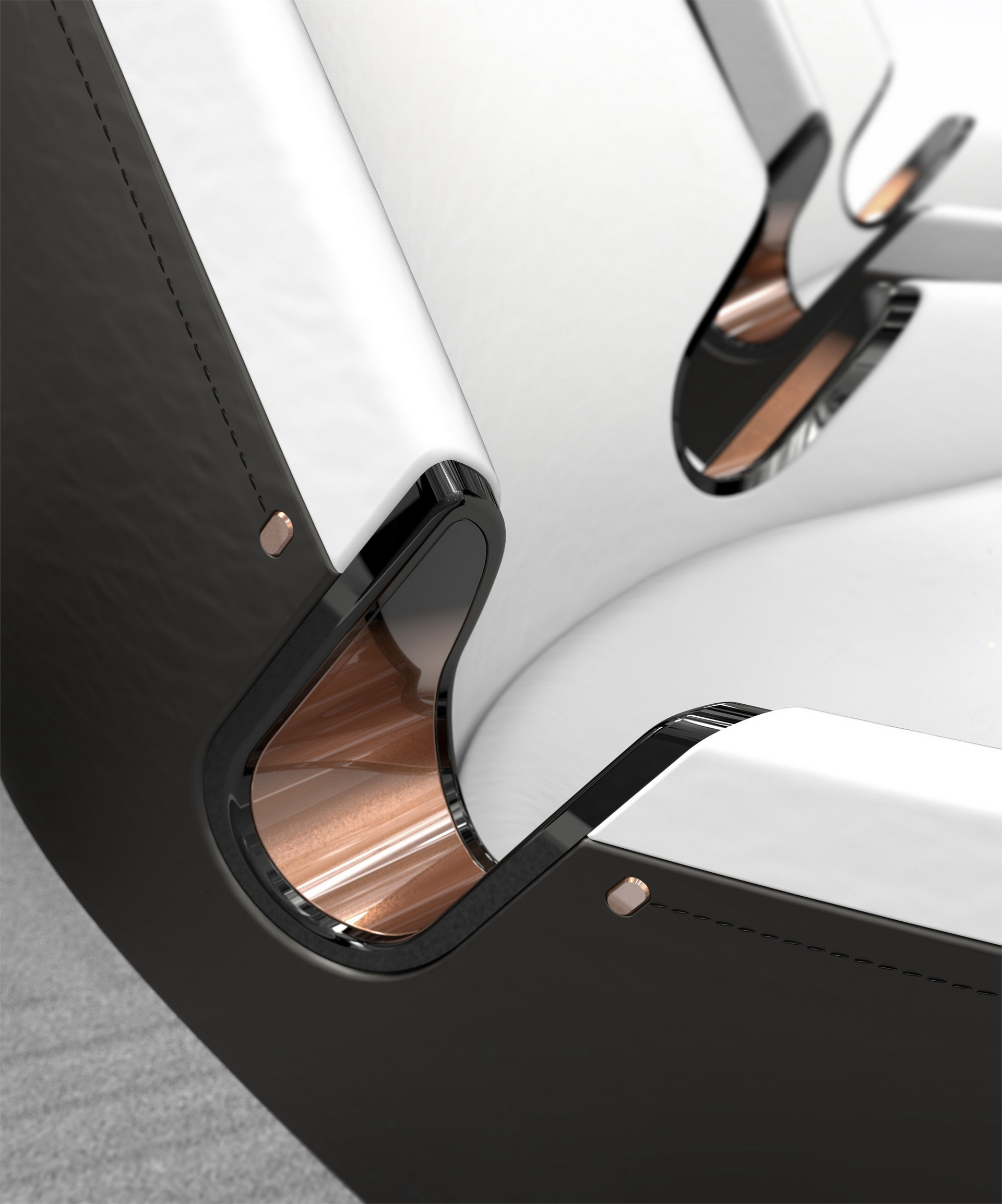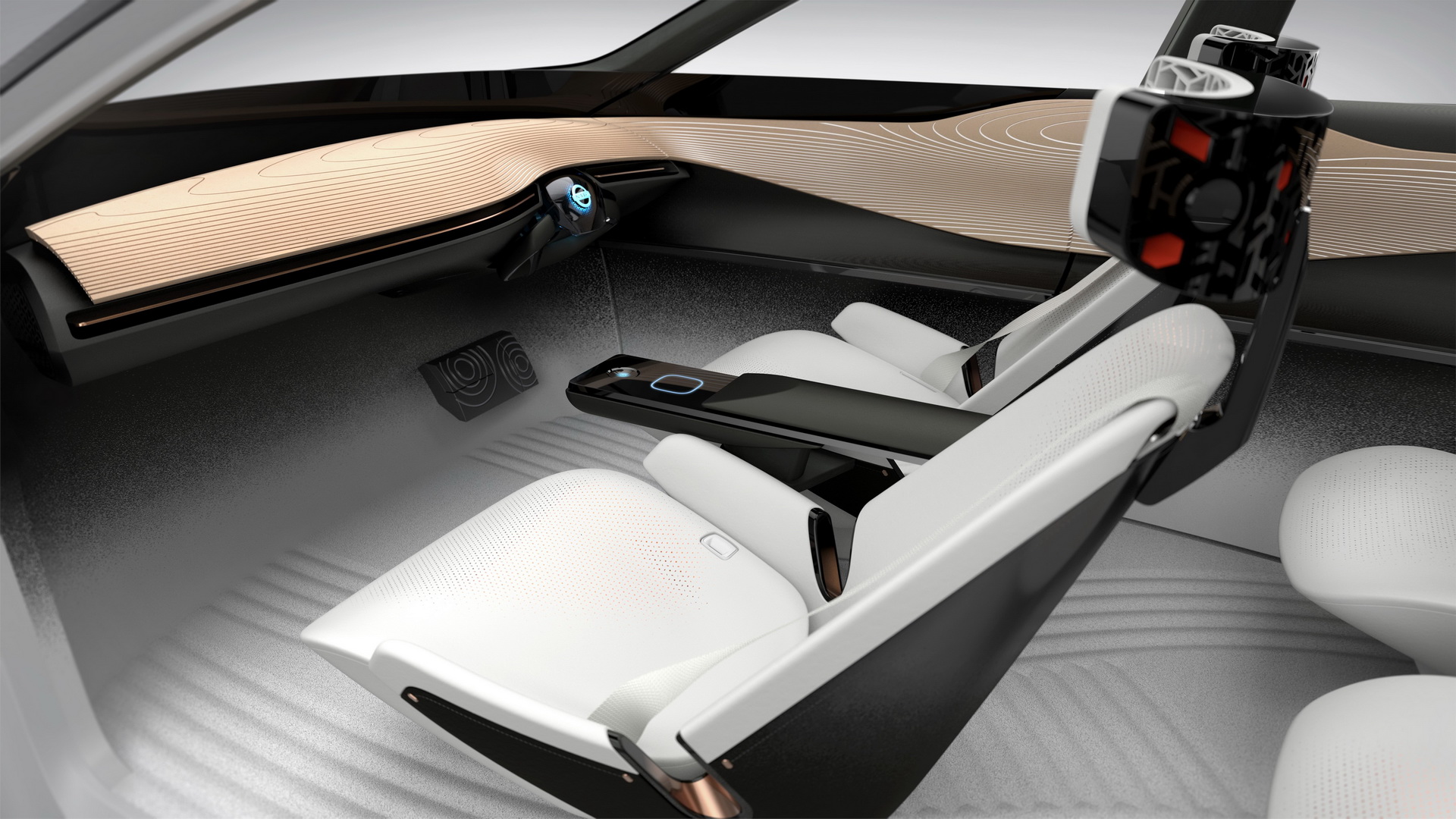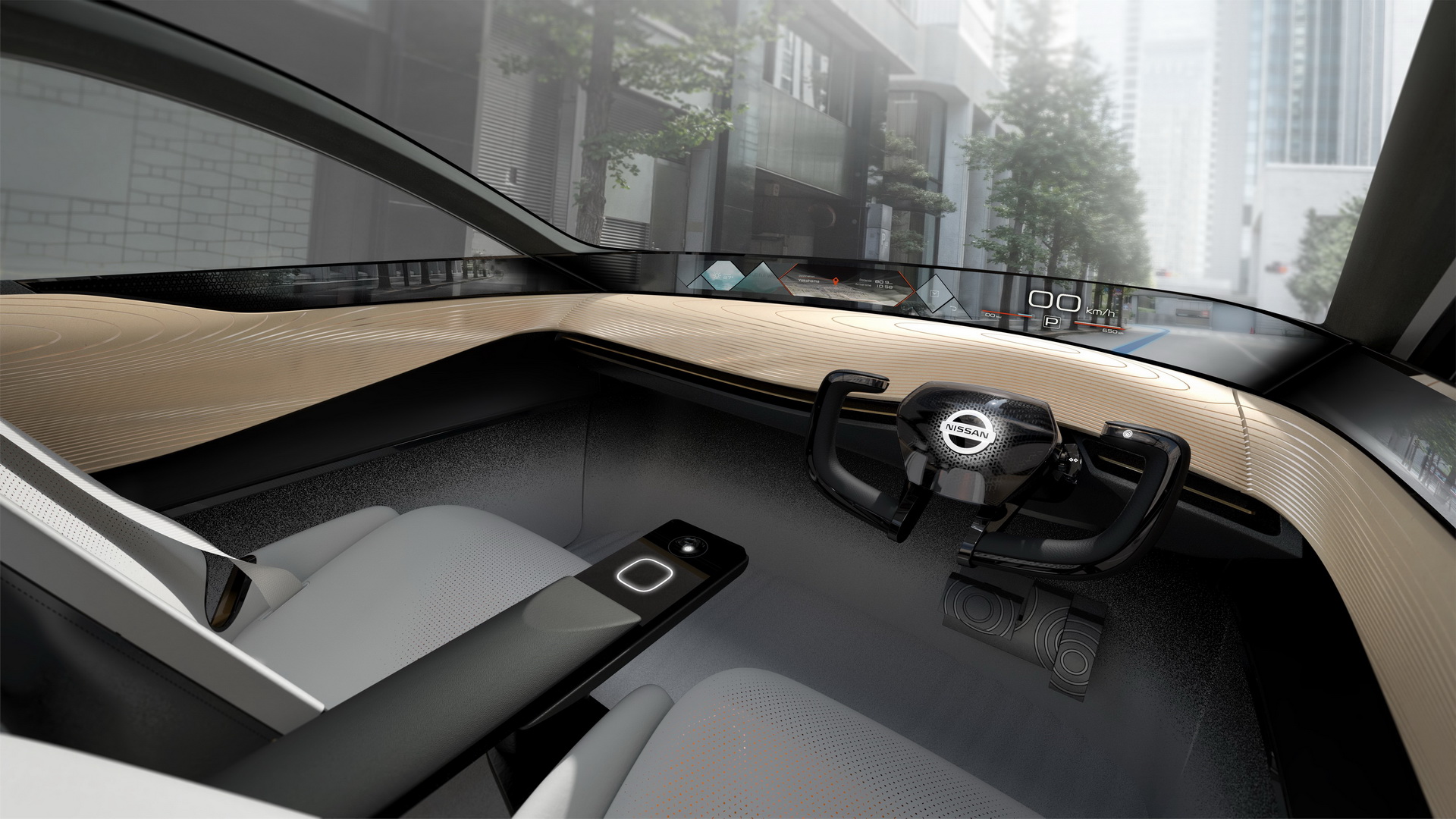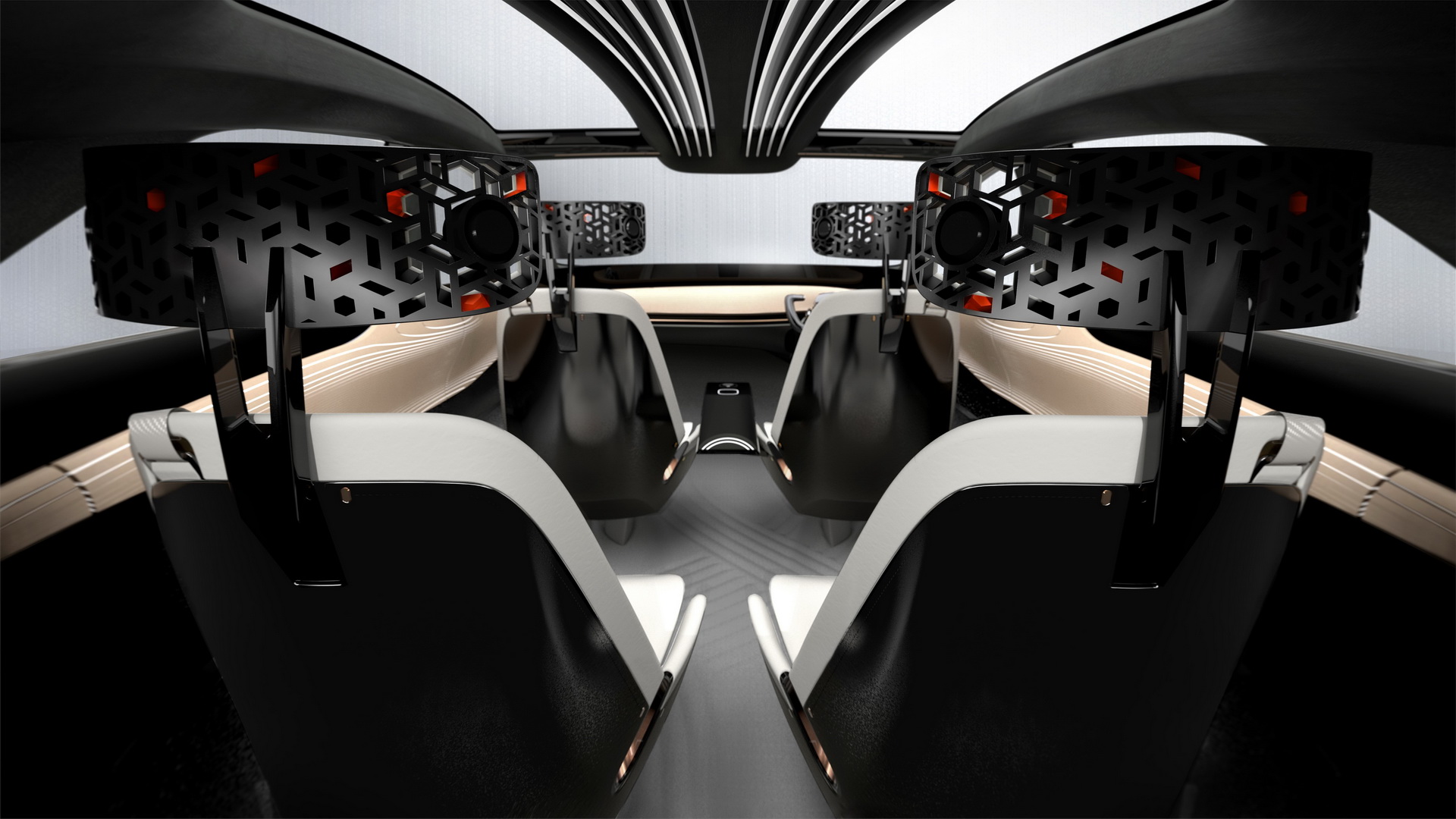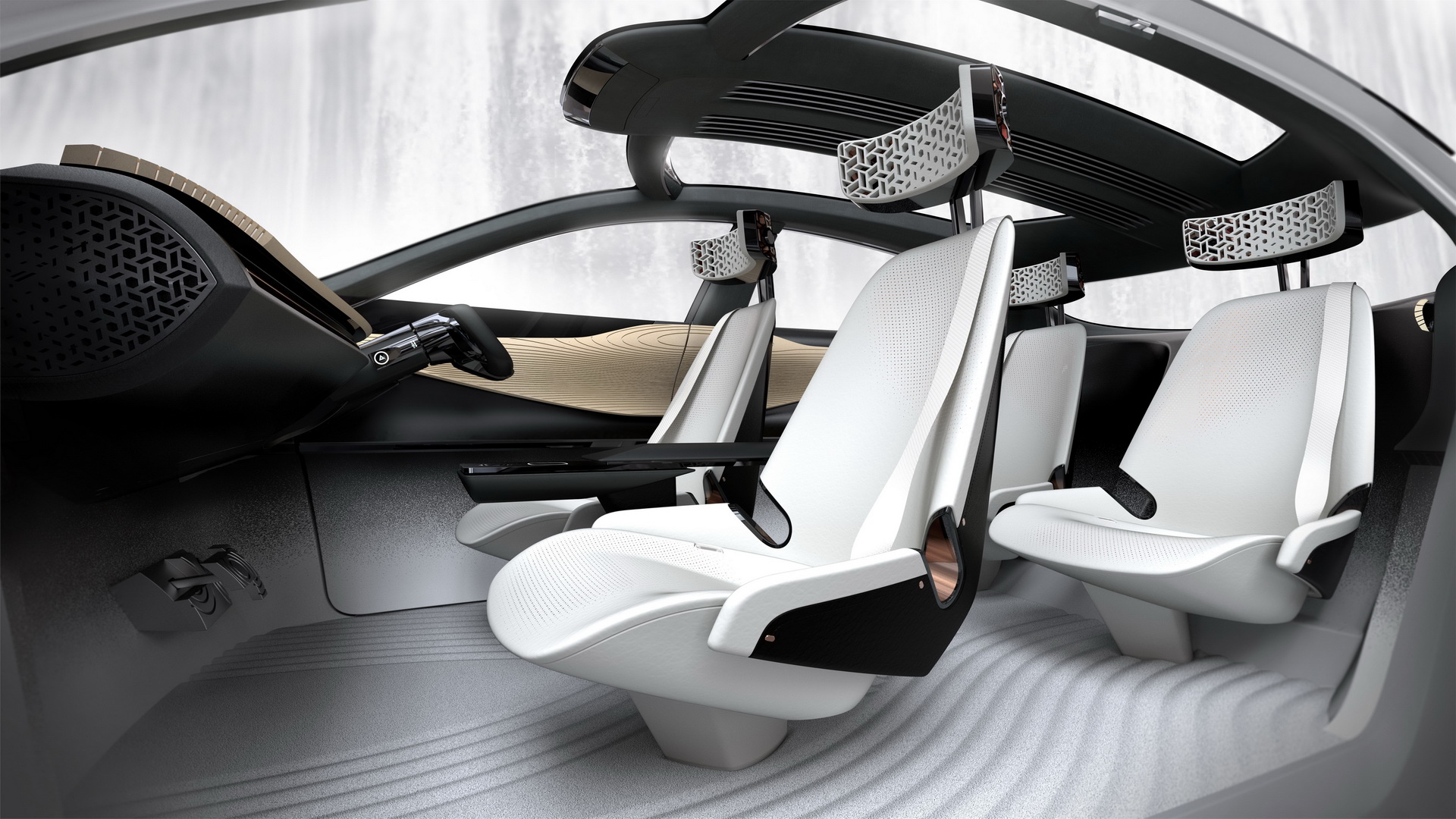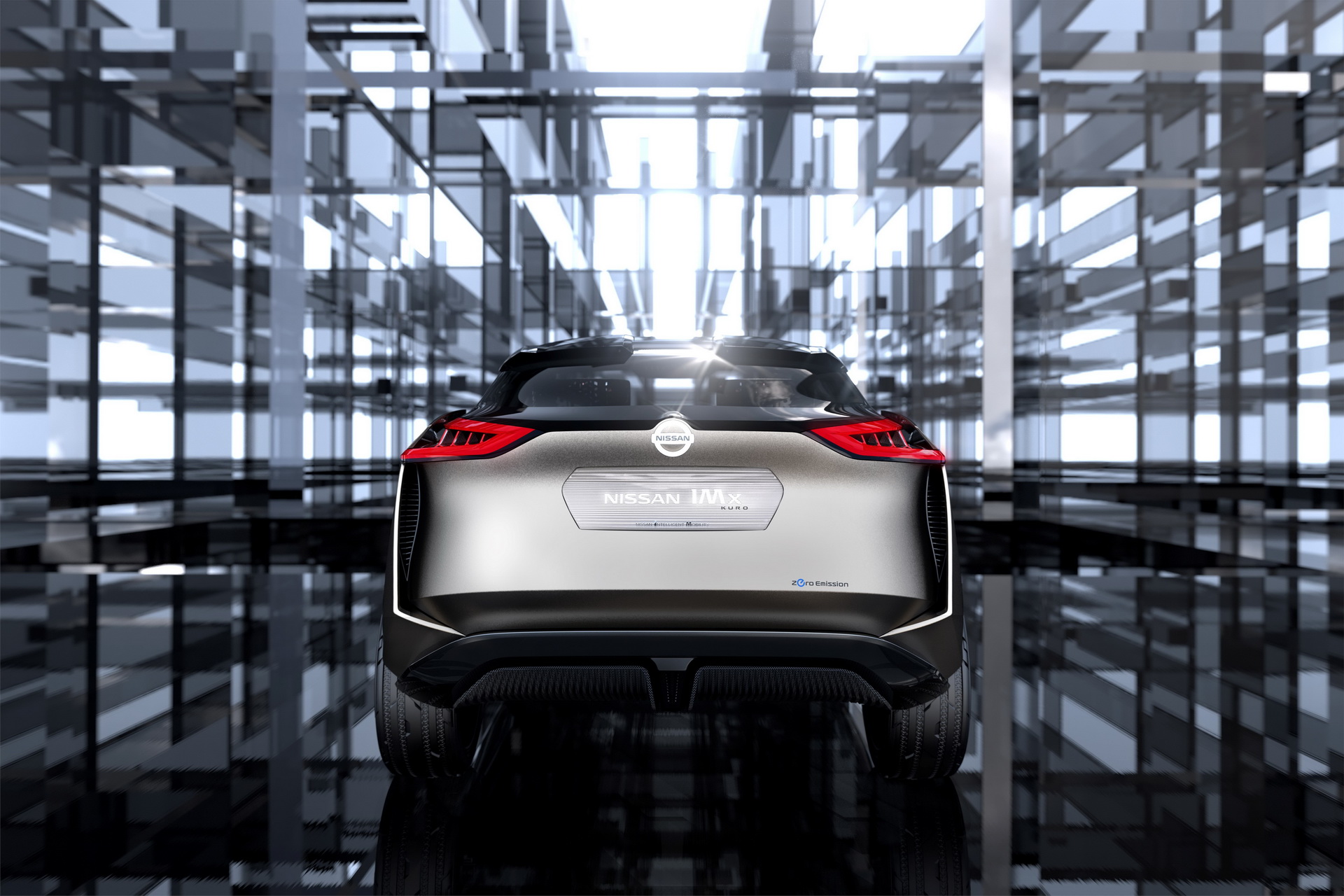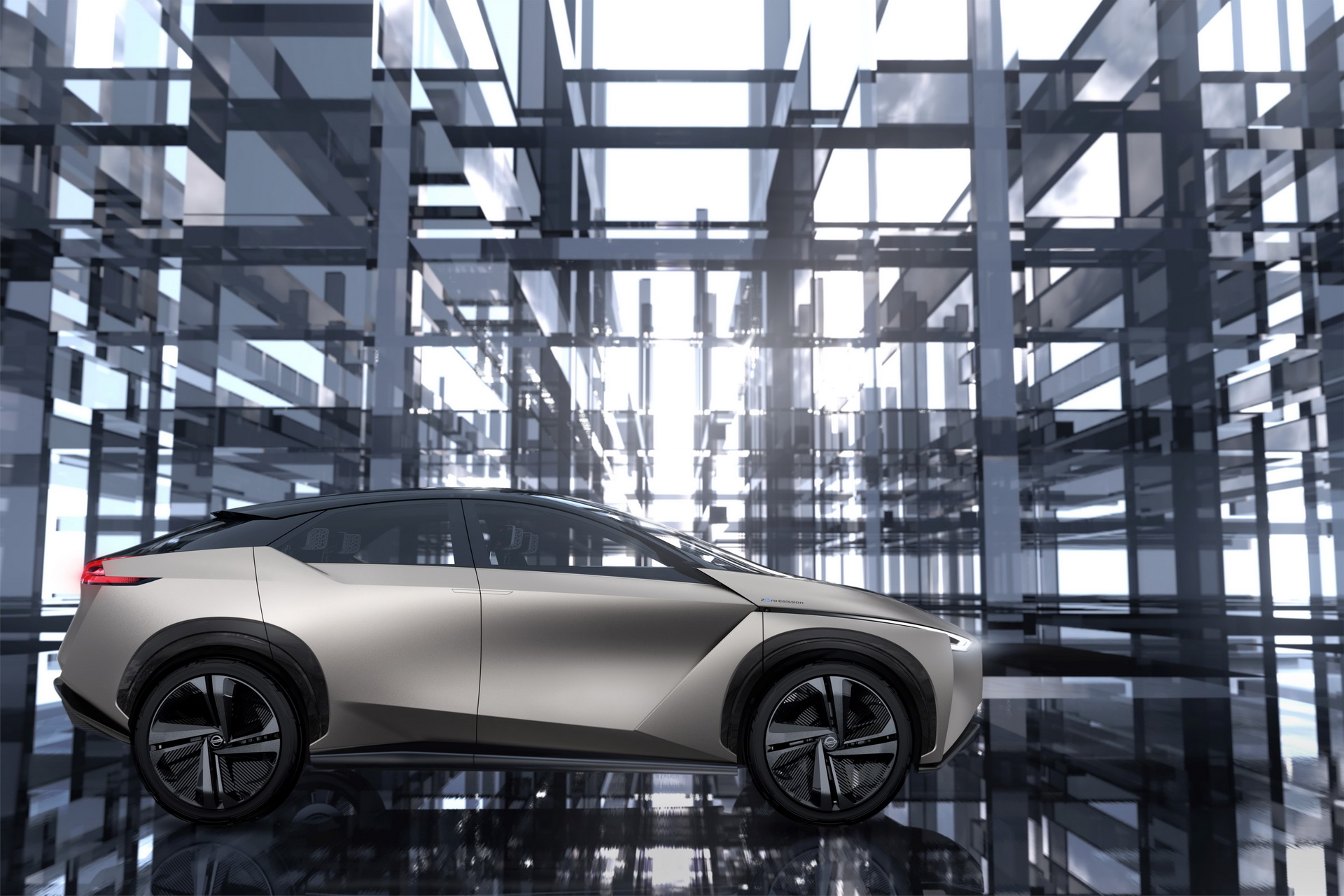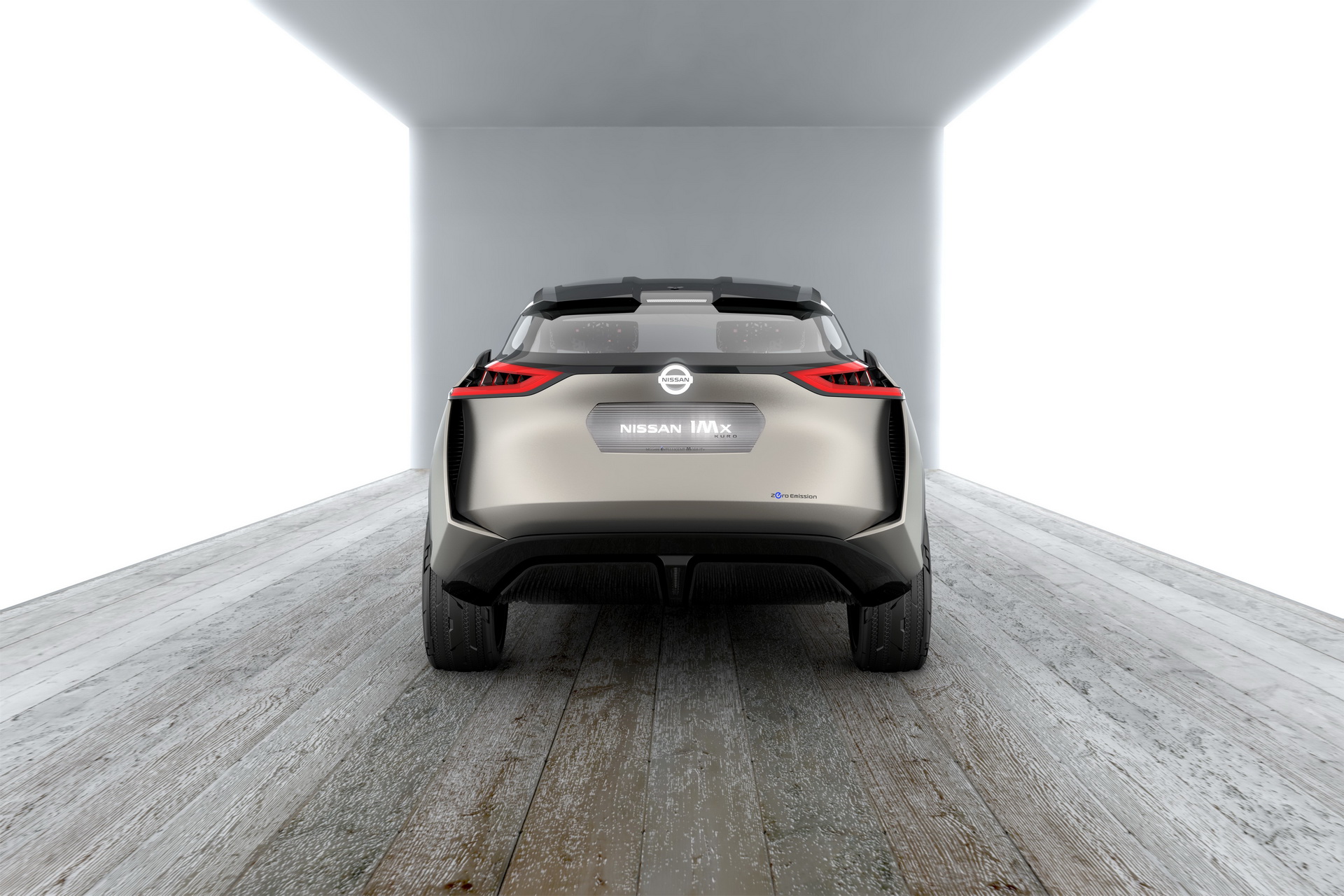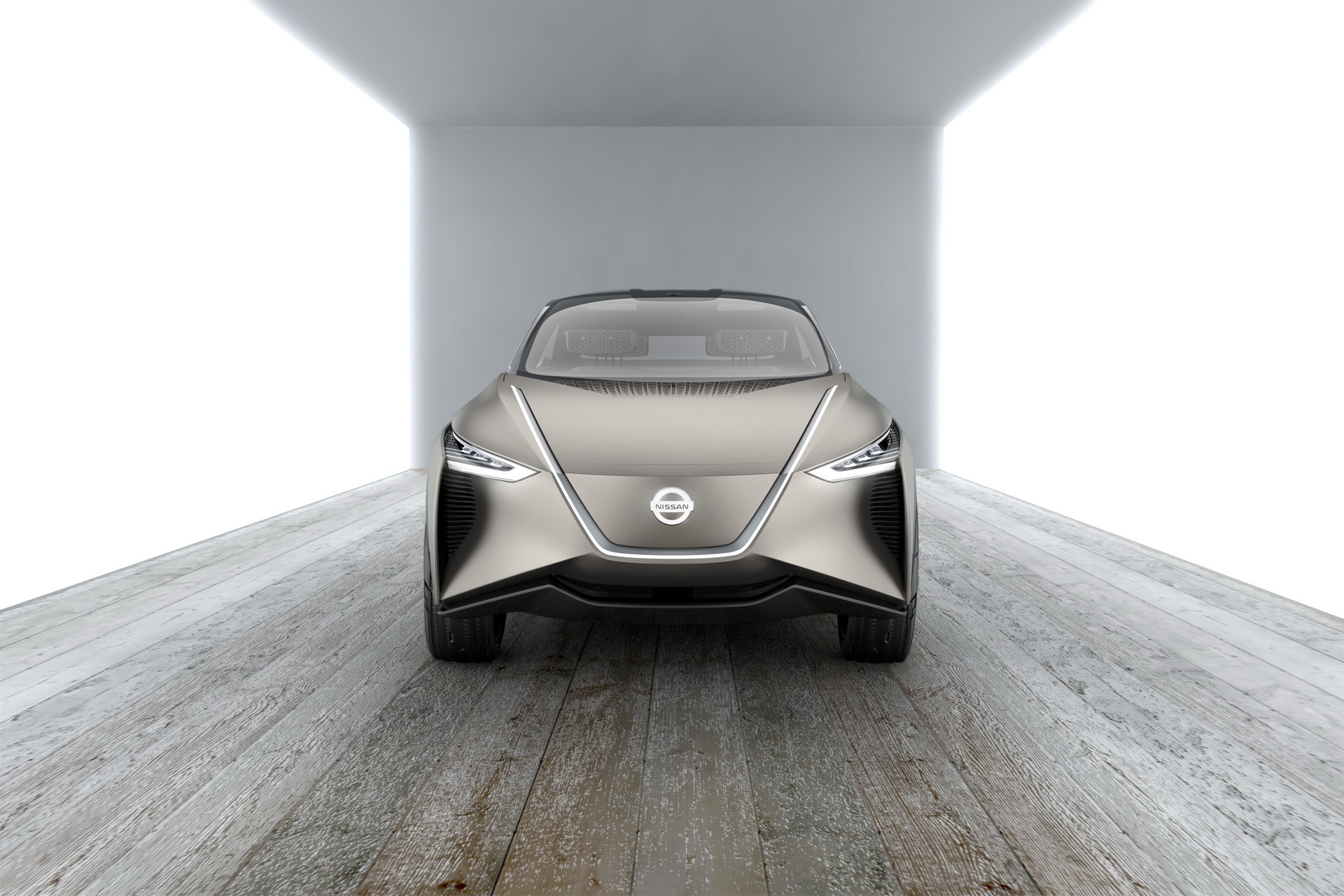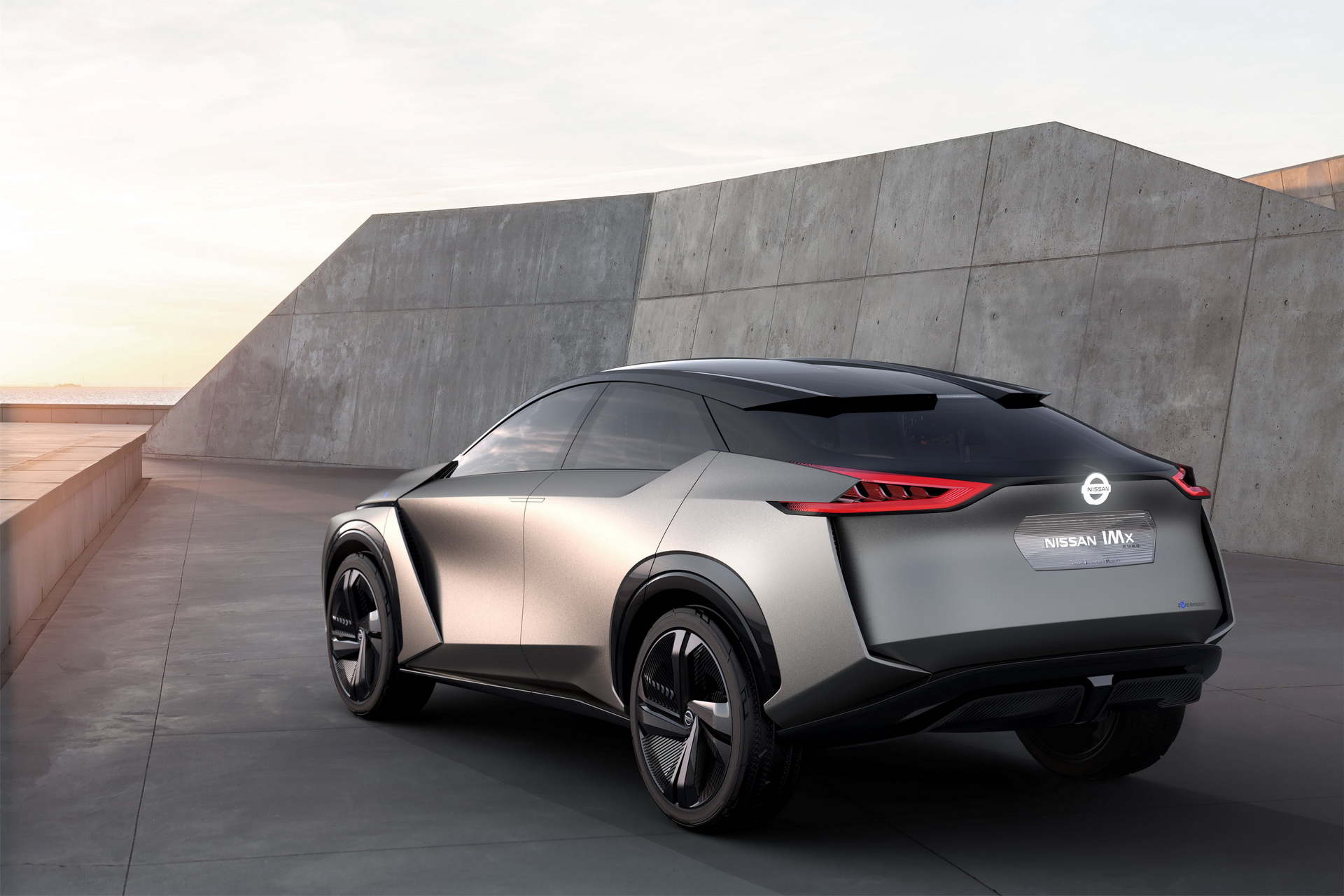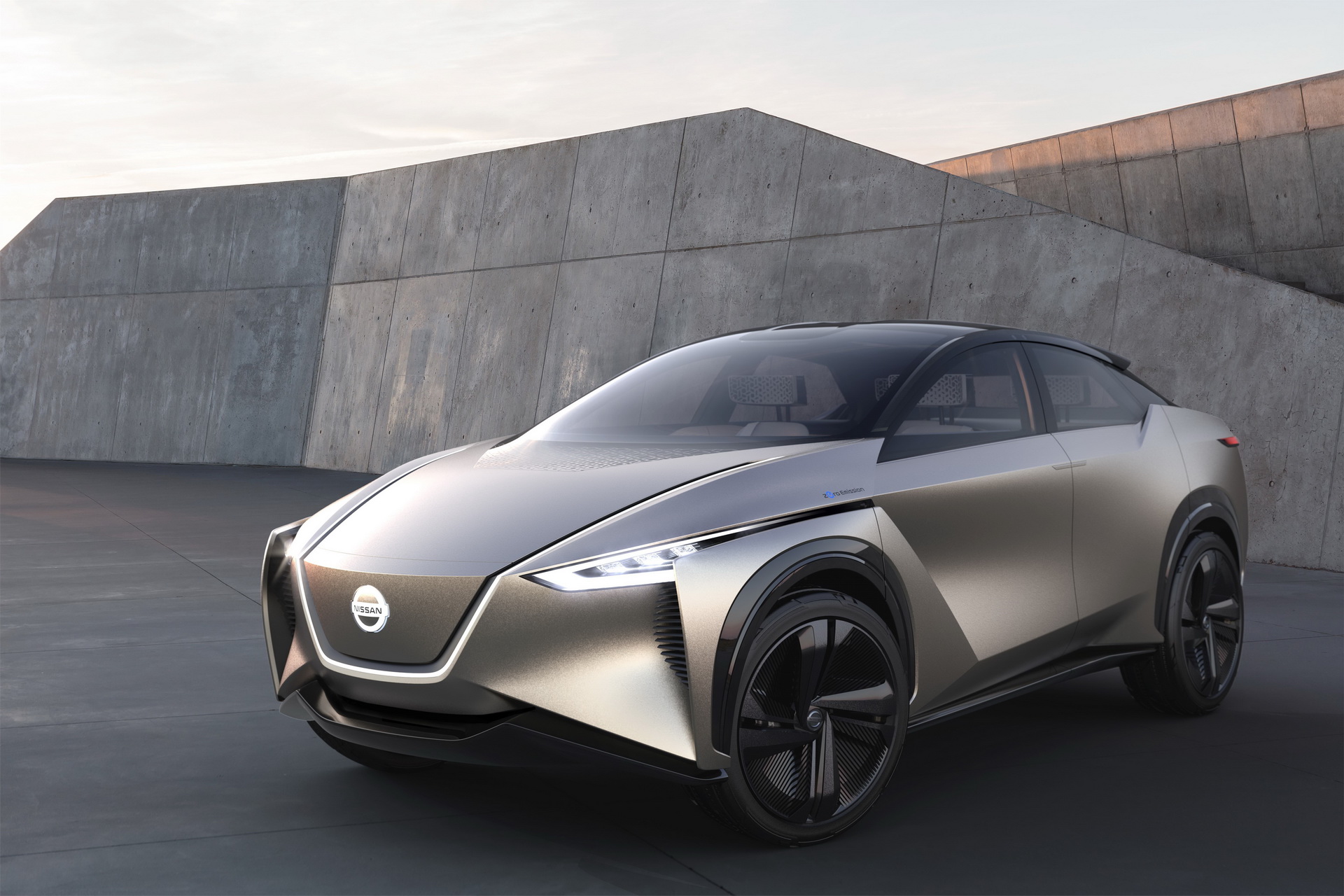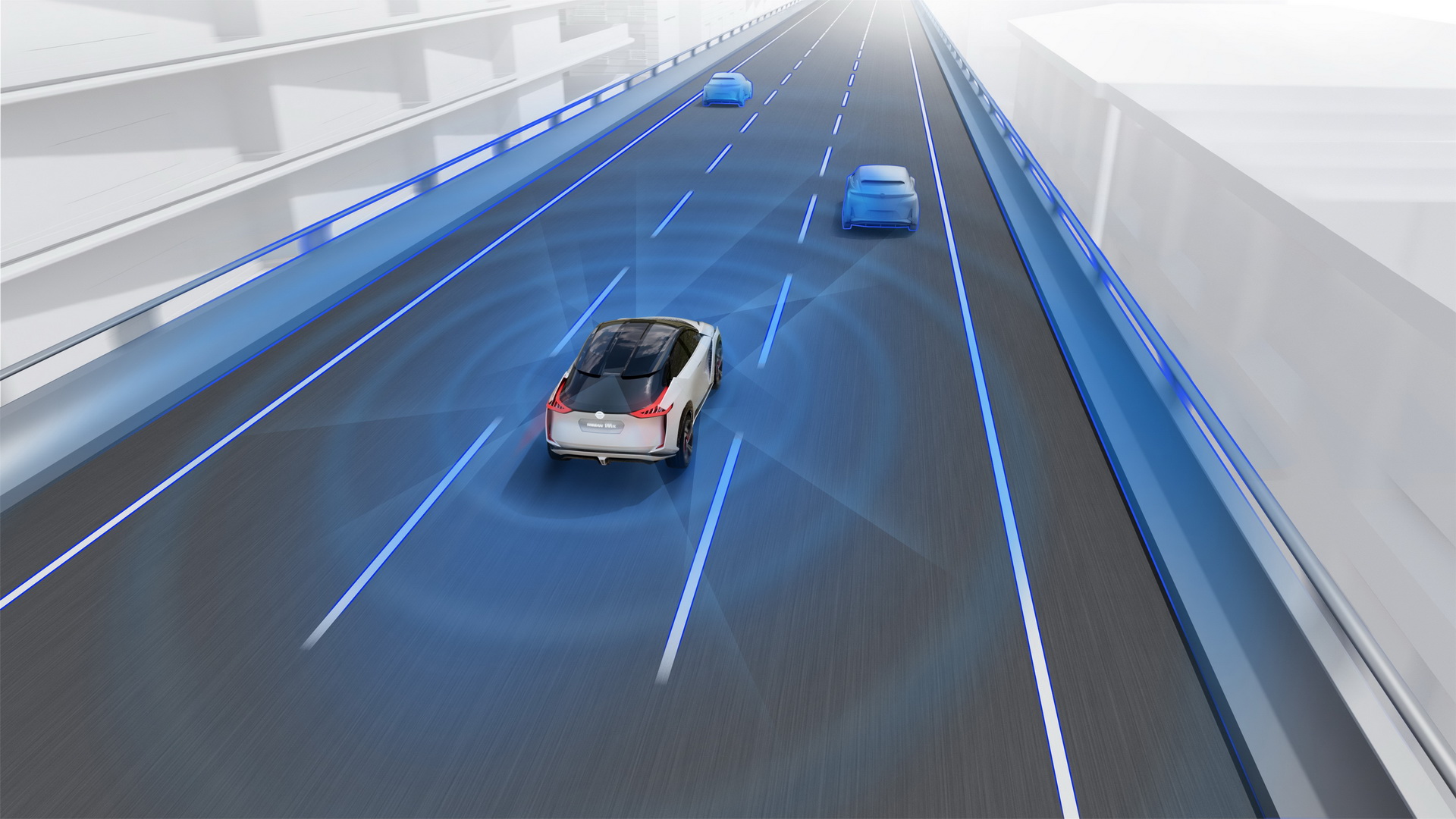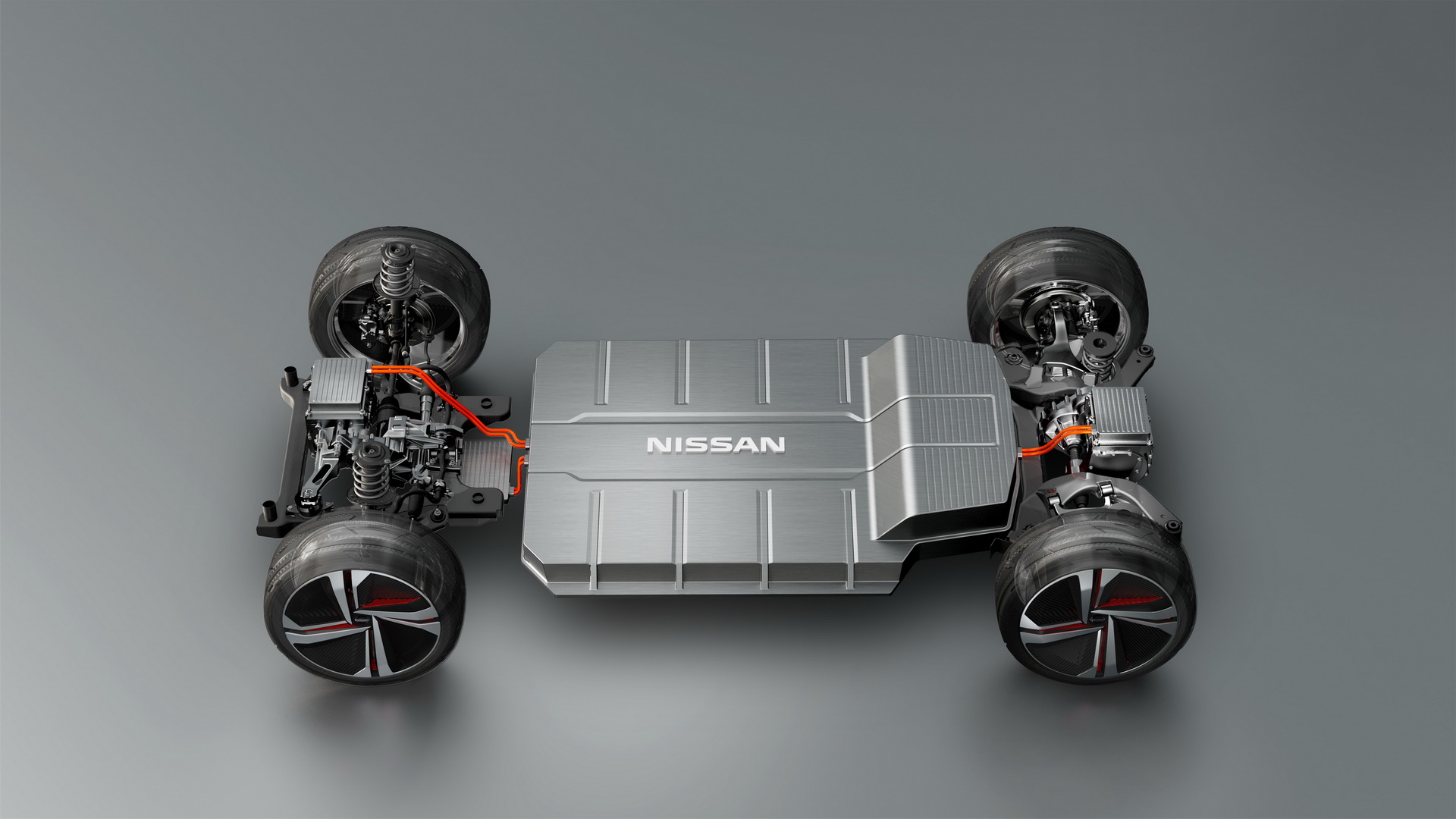Remember Nissan’s IMx crossover concept from last year’s Tokyo Auto Show? In case you don’t, here it is again, only this time it’s in Geneva, wearing an updated grille, new black trim and wheels and a new dark gray body color.
Other upgrades, compared to the Tokyo car, include the integration of Nissan’s Brain-to-Vehicle (B2V) technology, although aesthetically, it’s the small yet noticeable changes that highlight the automaker’s continuous work on this concept.
“After the Tokyo Motor Show, my team and I continued to consider the IMx’s potential,’ stated Nissan design boss Alfonso Albaisa. “We asked ourselves if the basic concept of the IMx could be more SUV-inspired by making some relatively simple changes to details, accents and color.”
“Taken all together, these relatively minor changes have combined to give the IMx KURO a completely different personality, and the addition of the KURO moniker reflects that. It looks purposeful and indestructible – which we think is an interesting position for this concept and the application of technologies that is showcased by the vehicle.”
The B2V tech featured in the IMx KURO promises to speed up reaction times for drivers, in turn leading to cars that can adapt on the move and make driving more enjoyable.
If one could get this concept out on the road today, they would utilize its high-output electric motors (a pair at the front and rear), for a combined 320 kW (429 HP) and 700 Nm of torque. Thanks to a high capacity battery that’s also been redesigned, the IMx KURO offers a driving range of more than 600 km (372 miles) on a single charge.
The fully-autonomous Nissan IMx KURO can also park itself and connect to the local power grid, while acting as a “virtual” power plant by returning electricity to the grid.
As for its interior design, the Japanese automaker went with trying to achieve a sense of openness. Just like the original IMx concept, the KURO version features a panoramic OLED instrument panel display, a separate, wood grain-patterned display, katanagre diagonal pattern on the seats and silicon-material cushioning on the head rests.
Thanks to Artificial Intelligence technology, the driver is able to control the instrument panel with eye movements and hand gesture. Since this concept features an intuitive interface, there is little need for physical controls and switches.
Article updated with live images from the Geneva Motor Show








